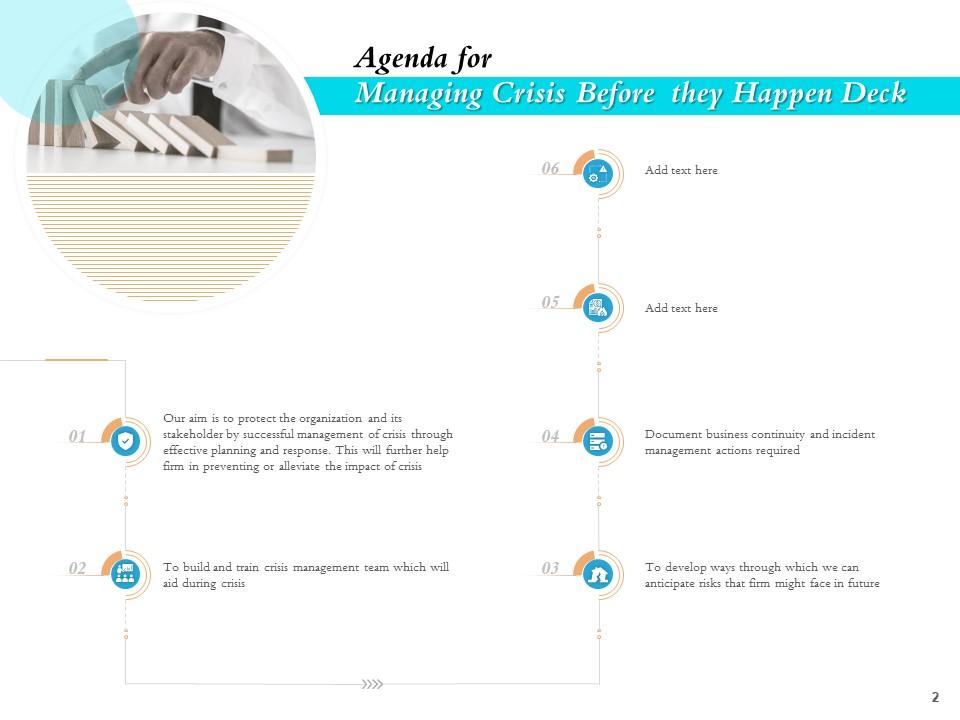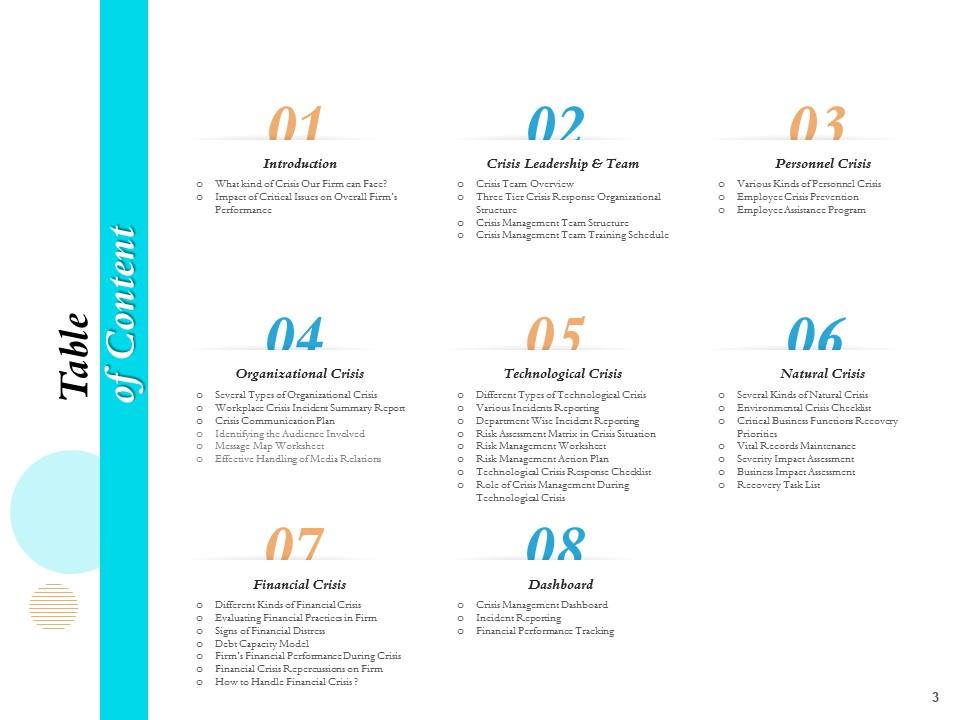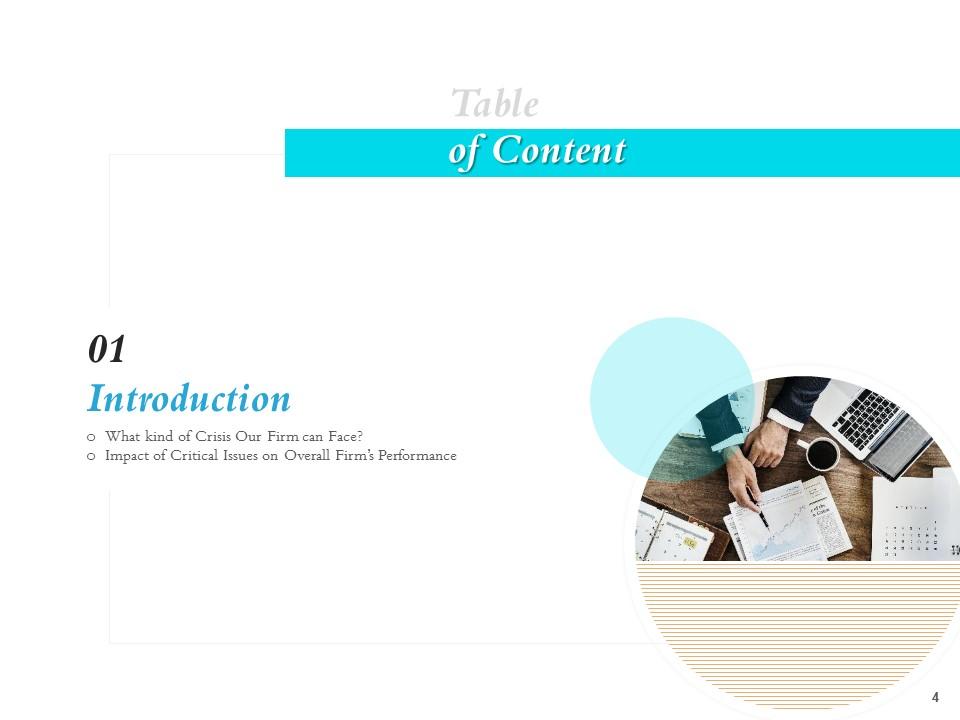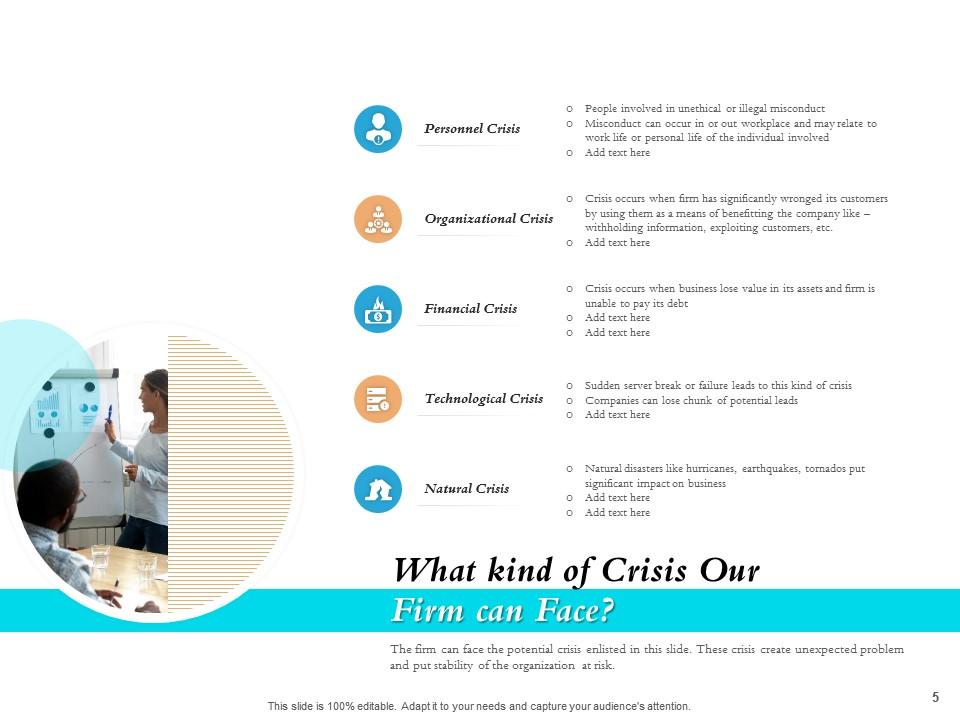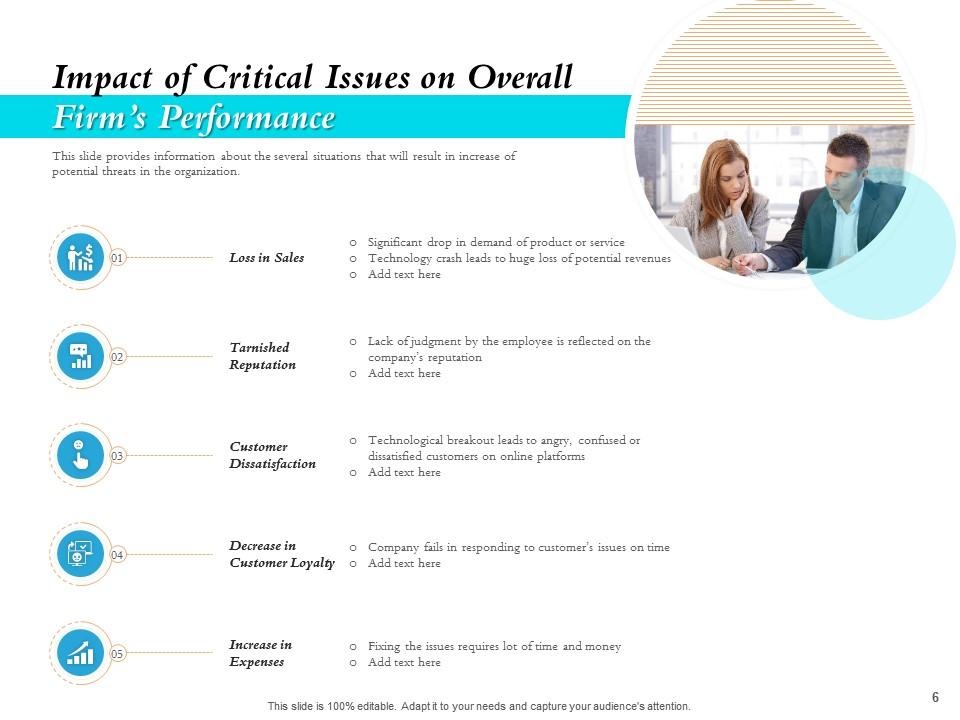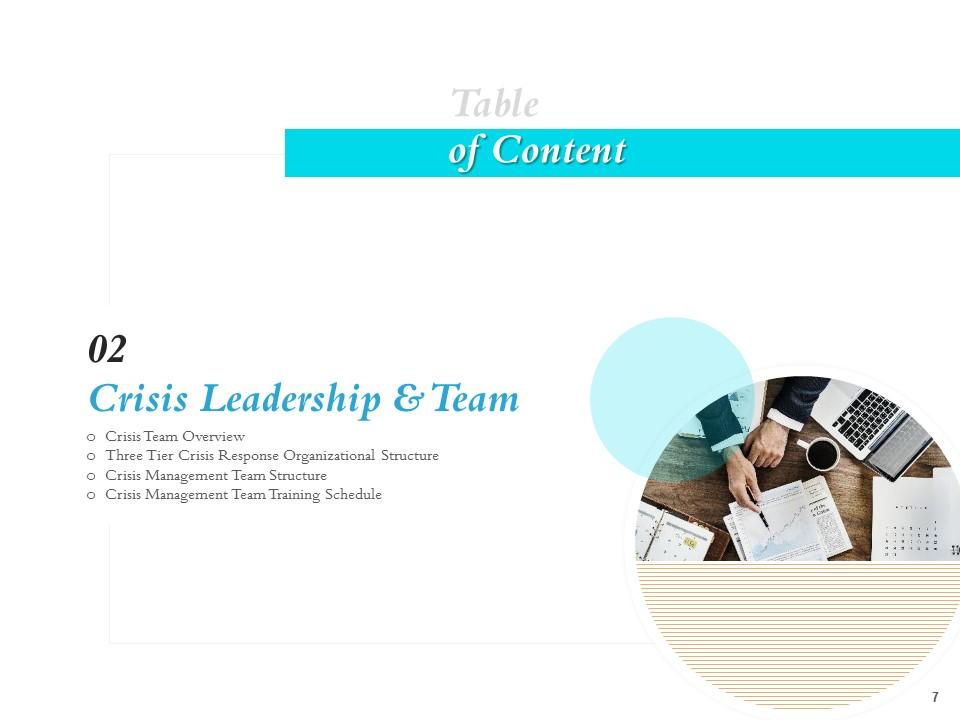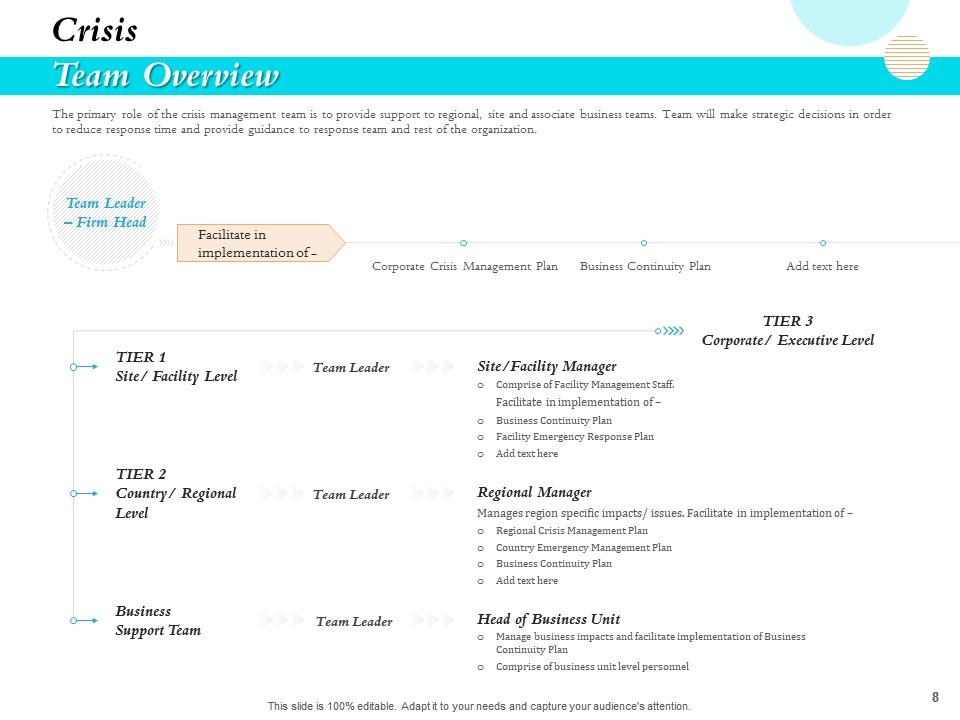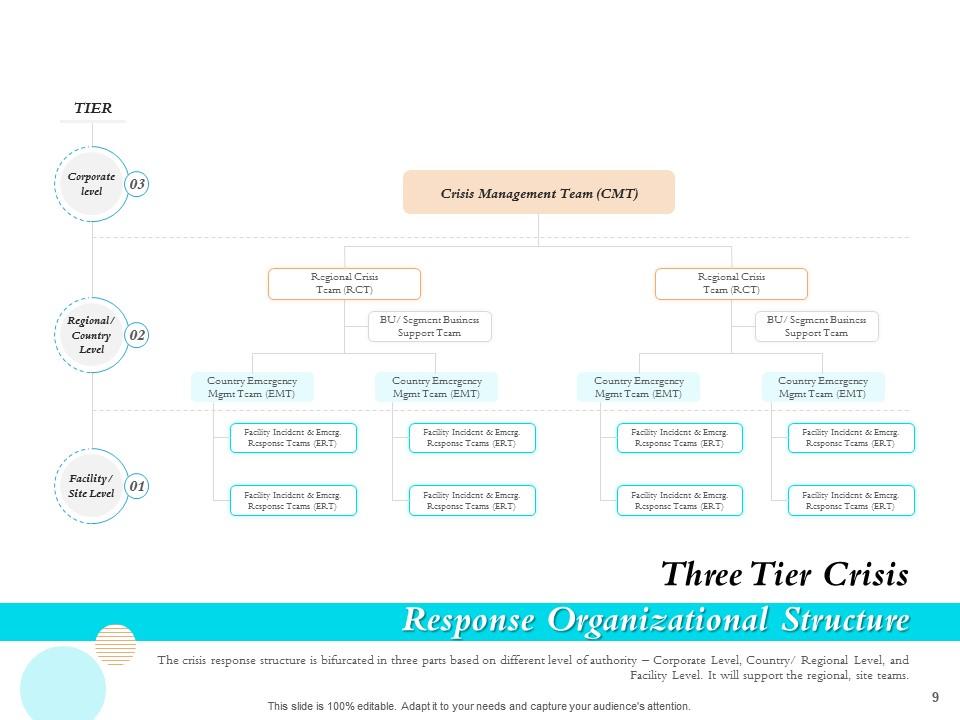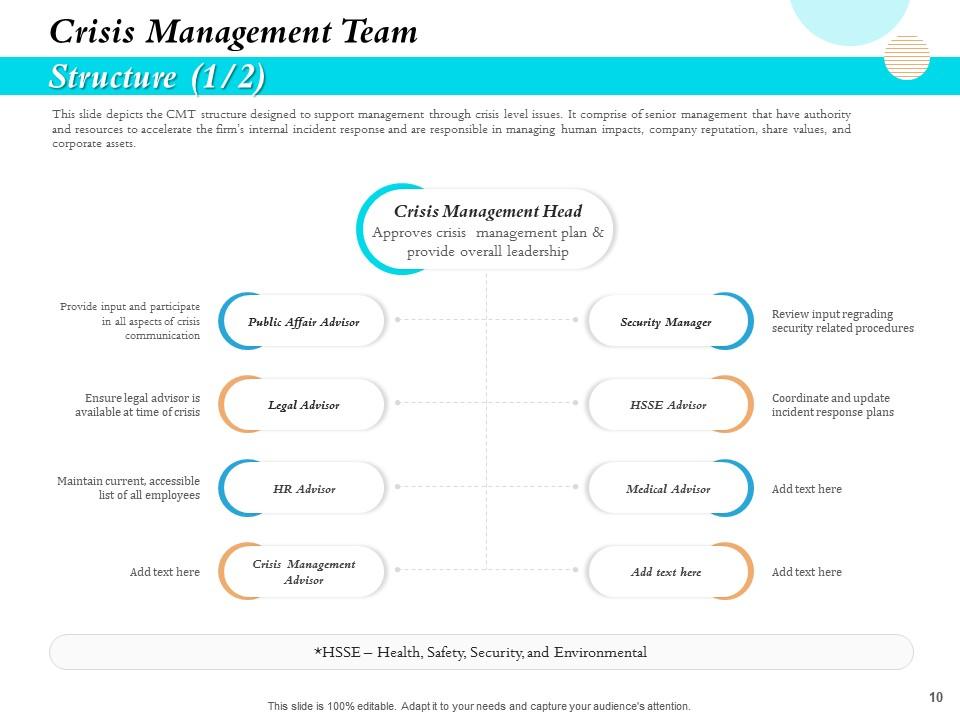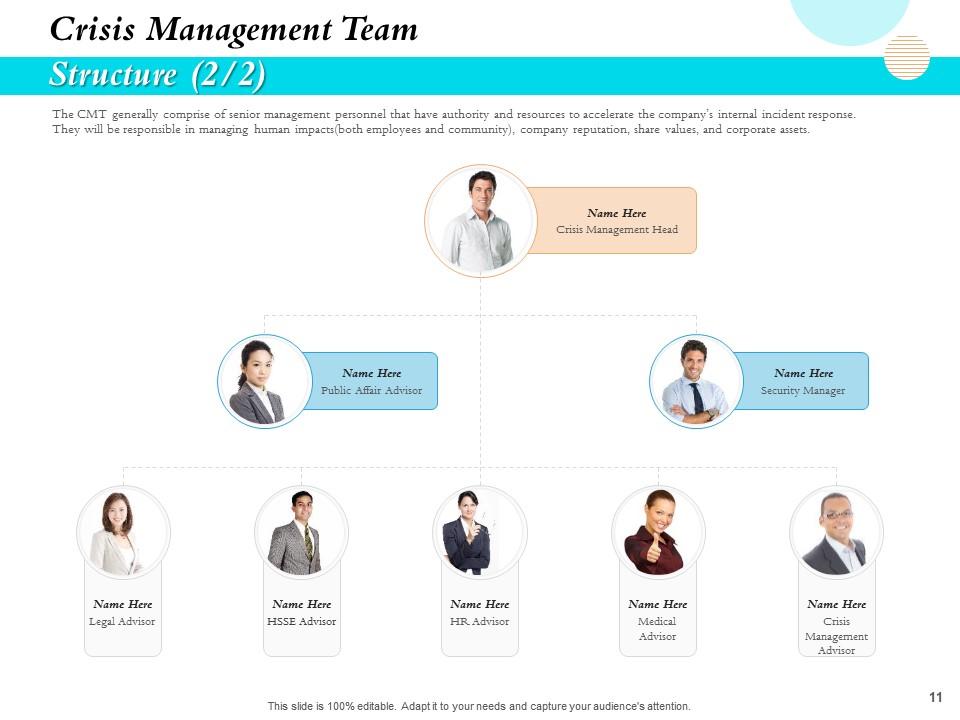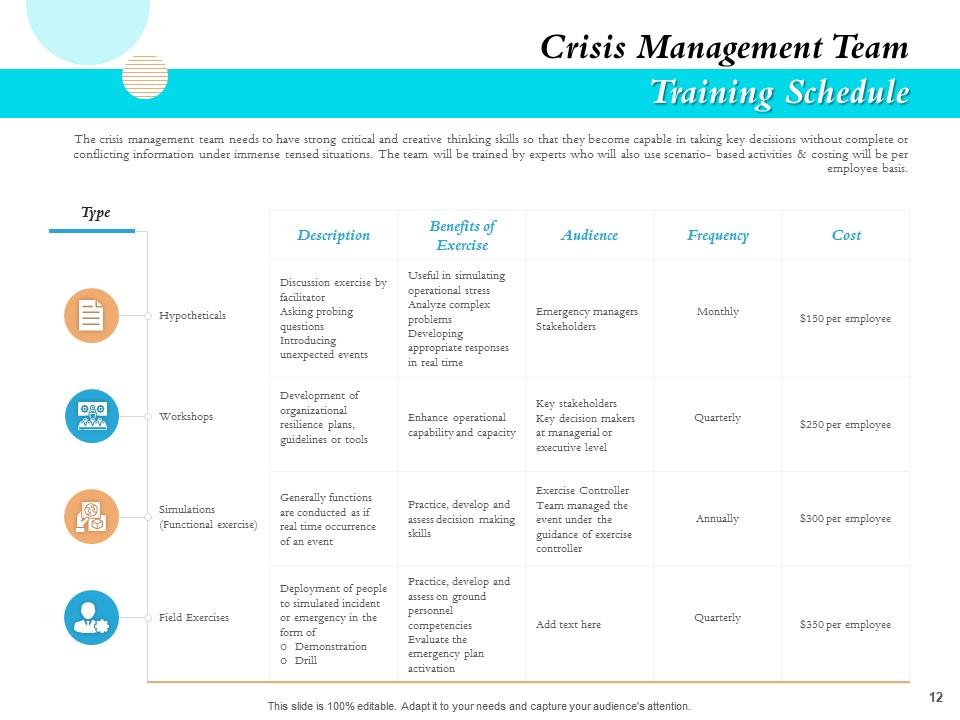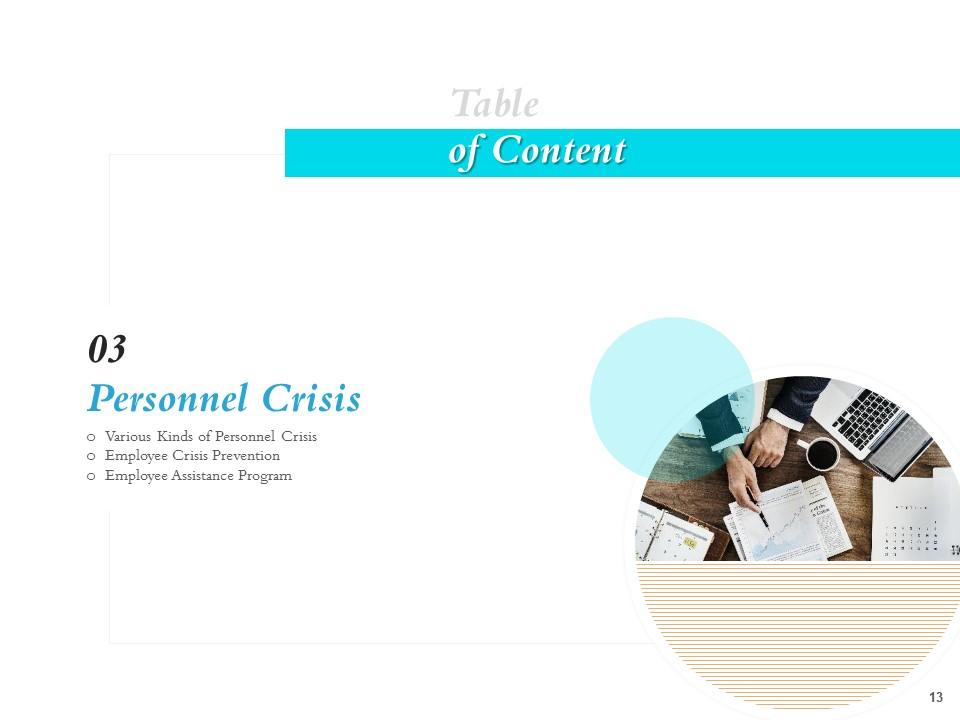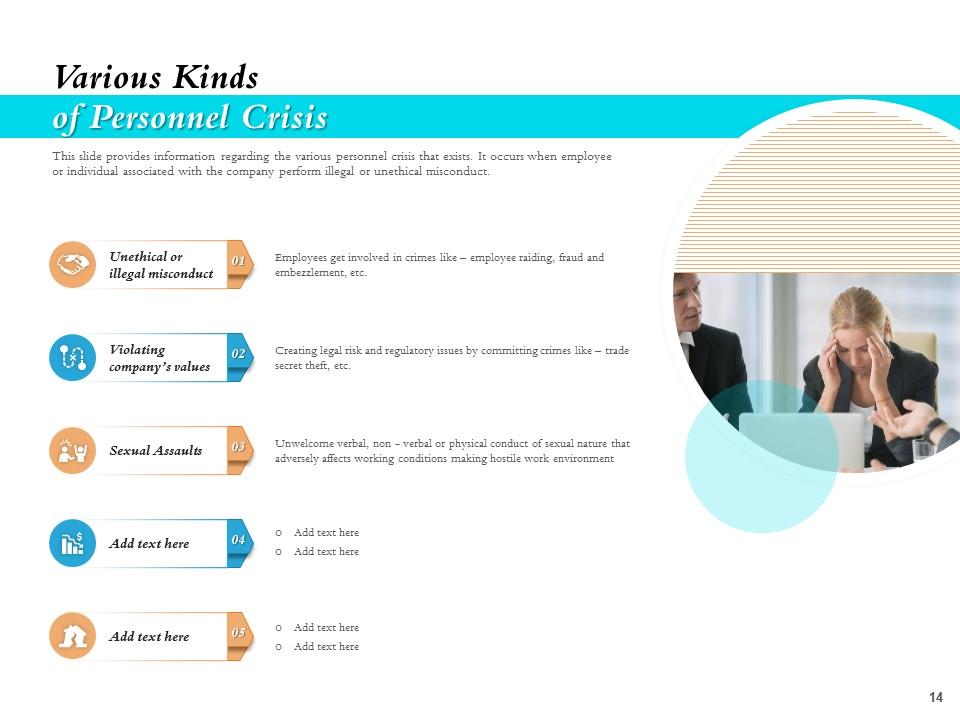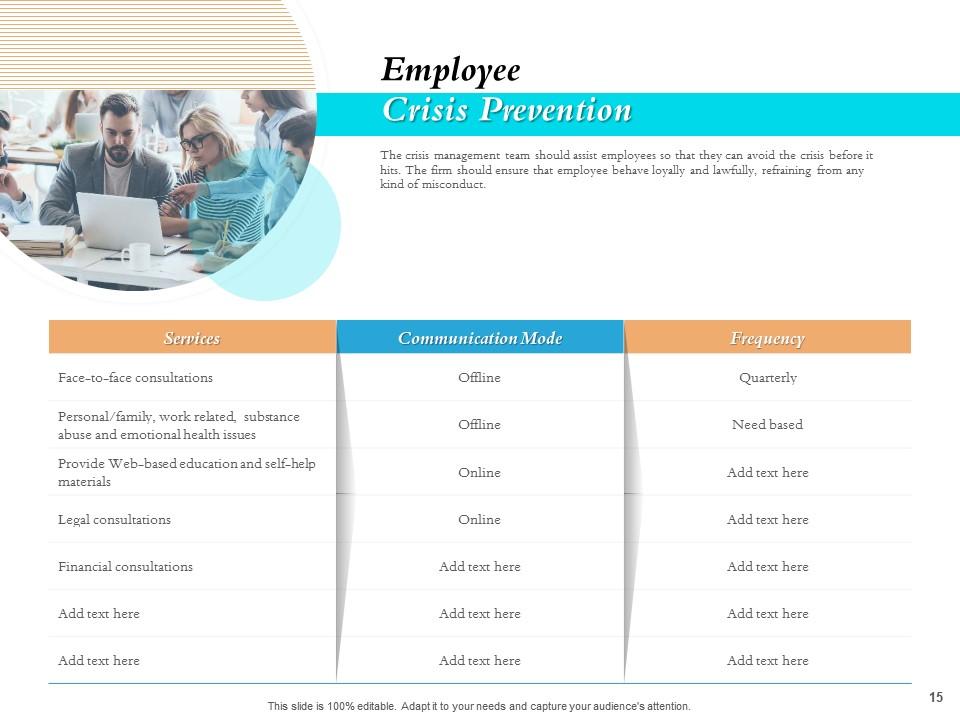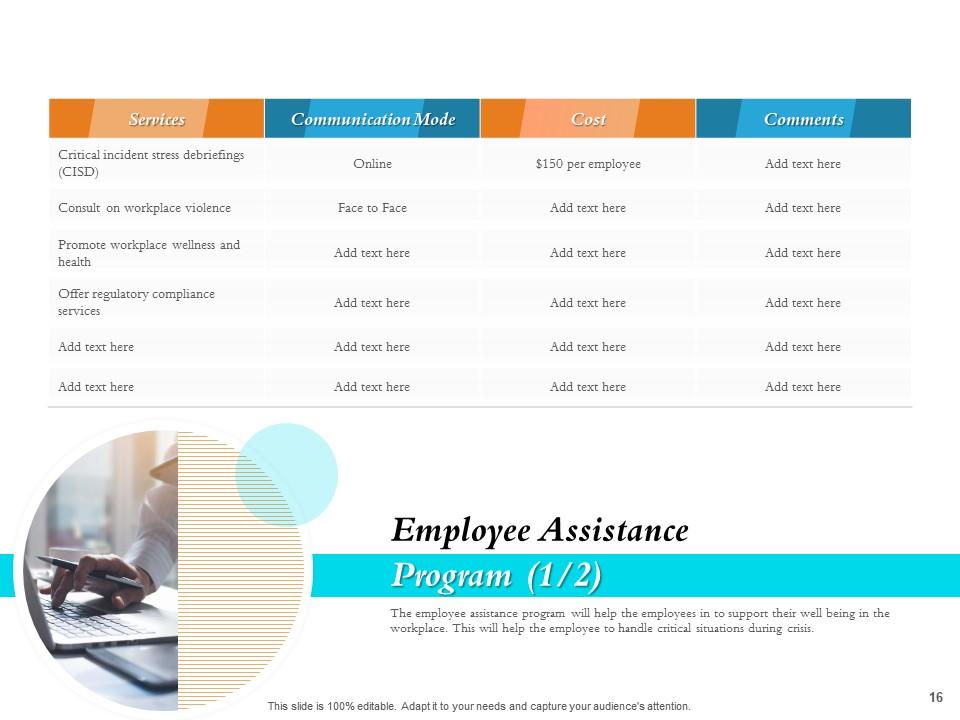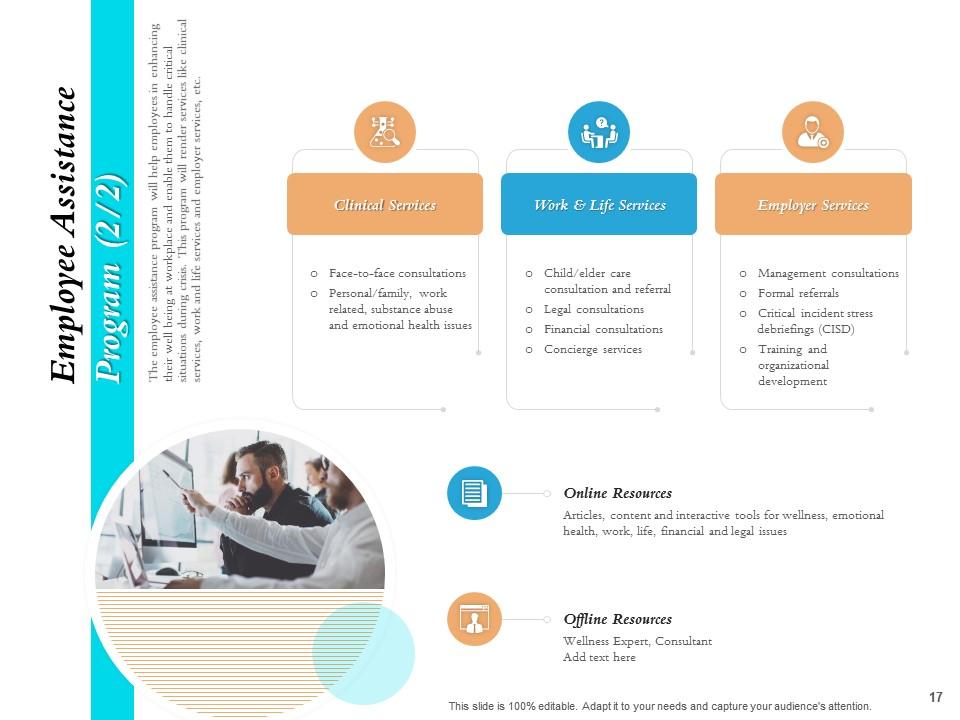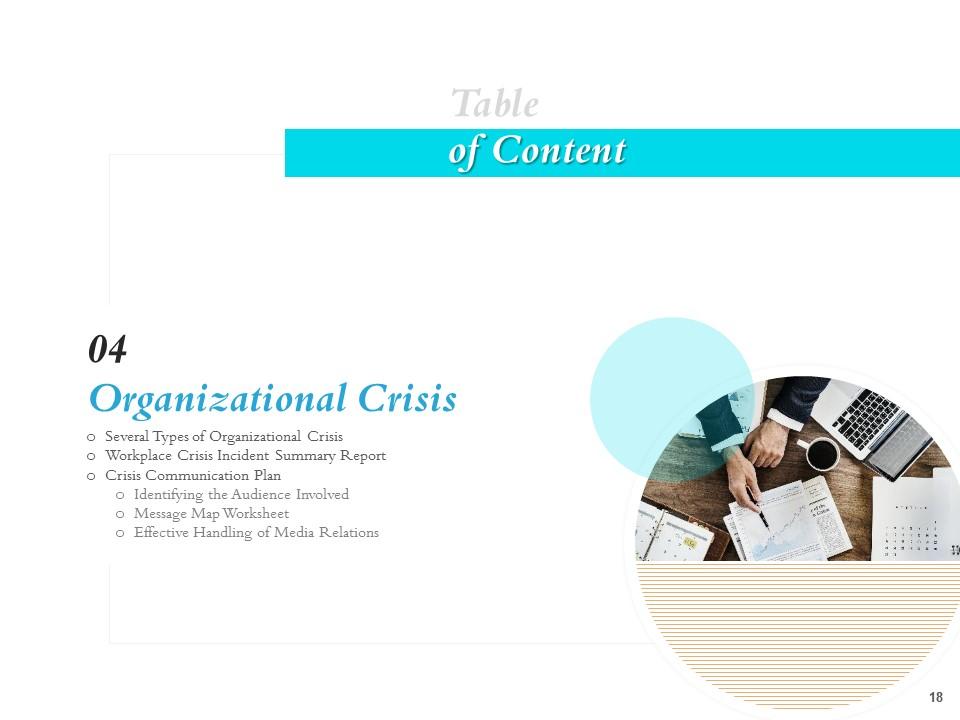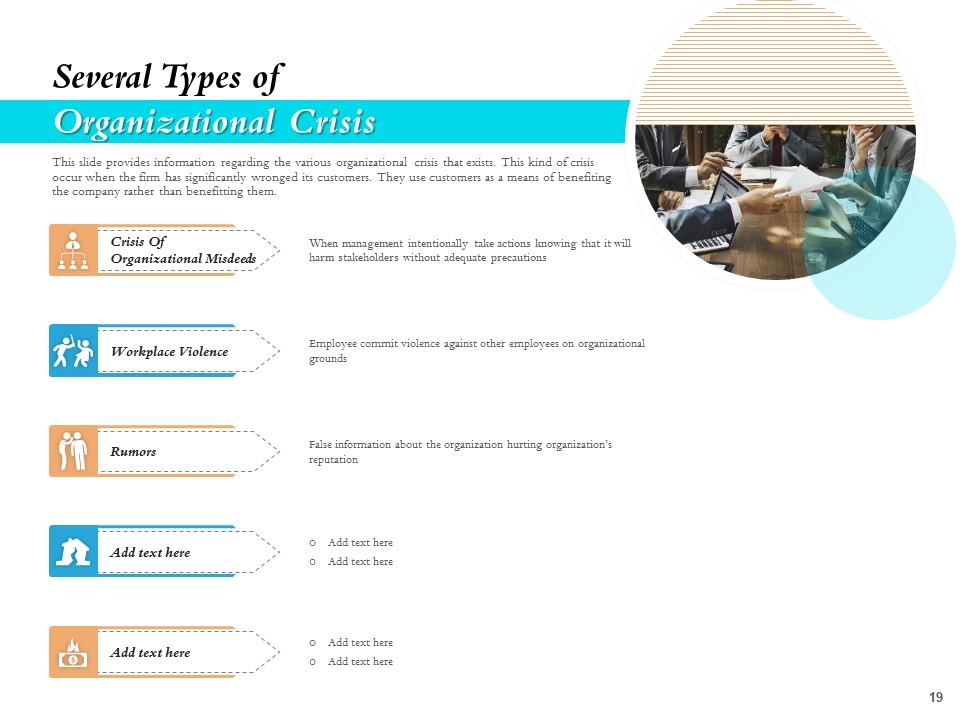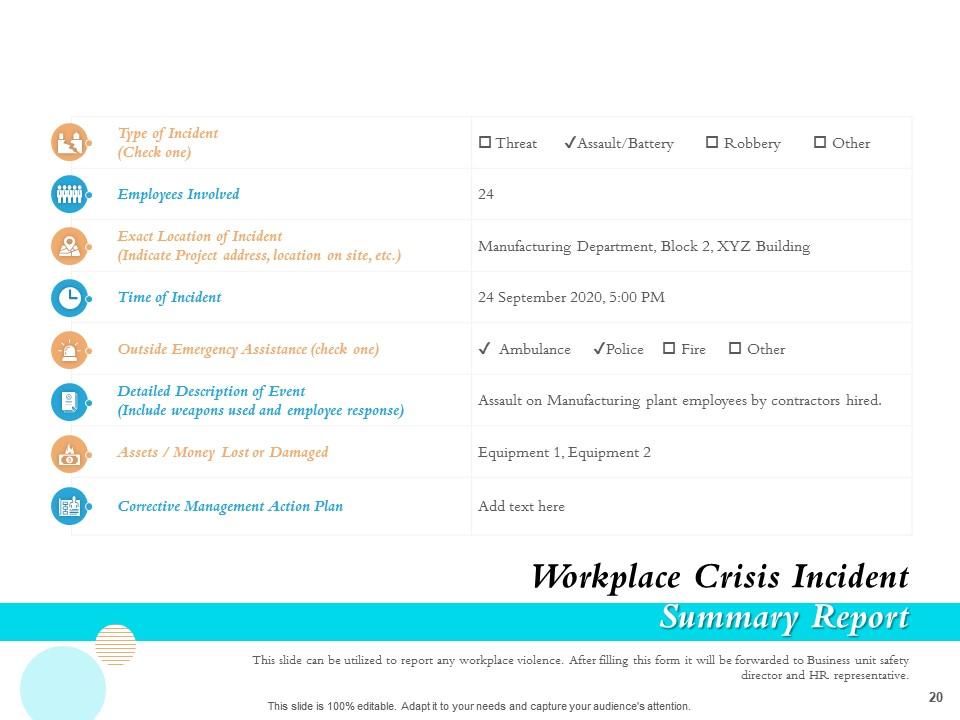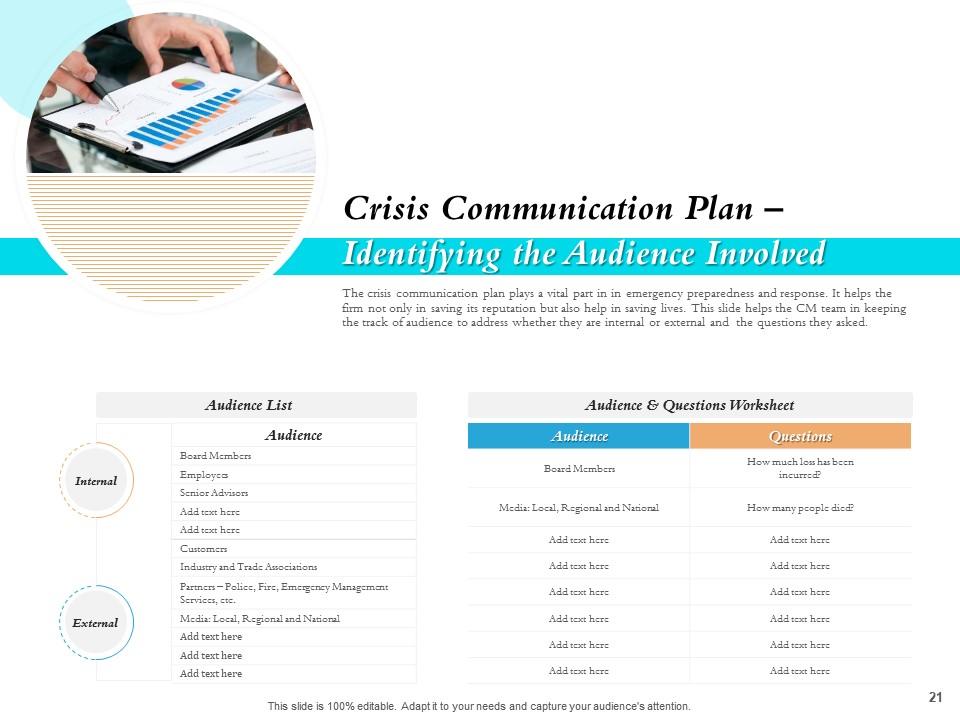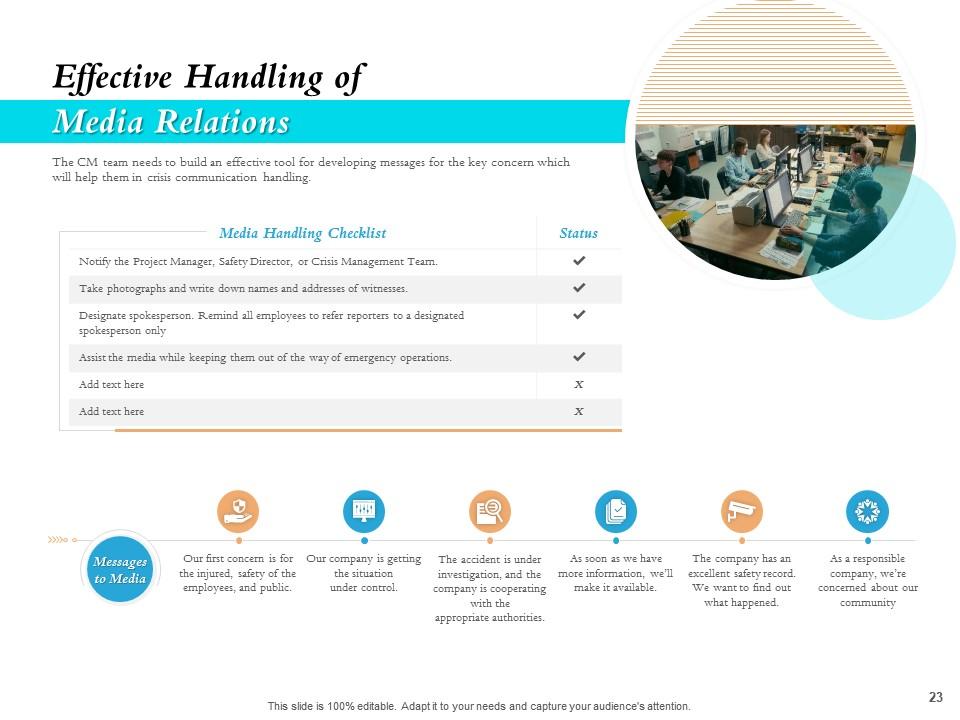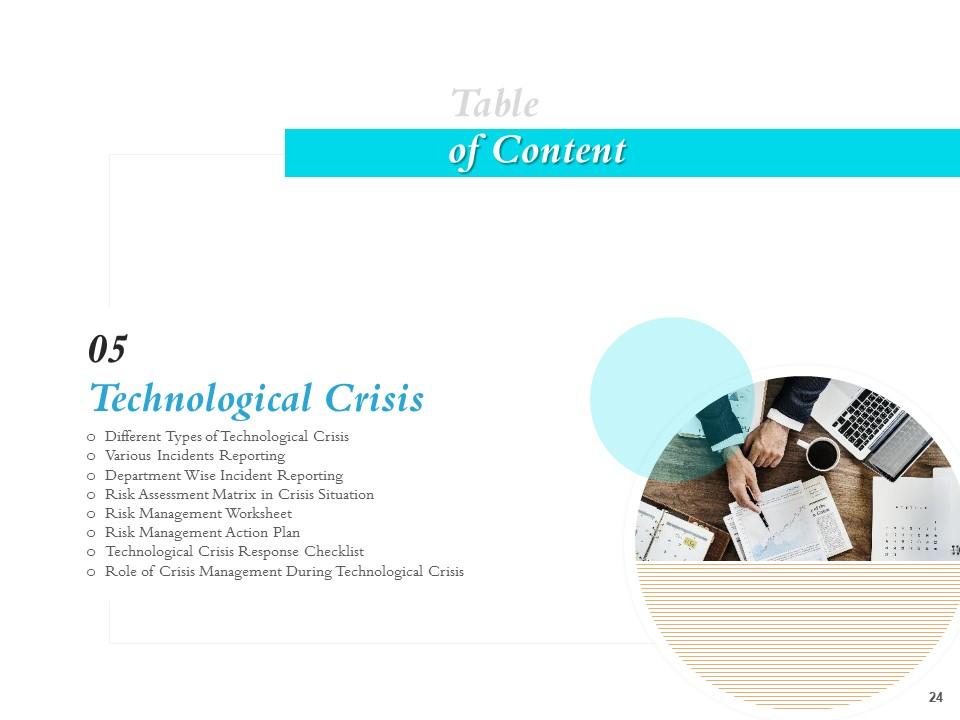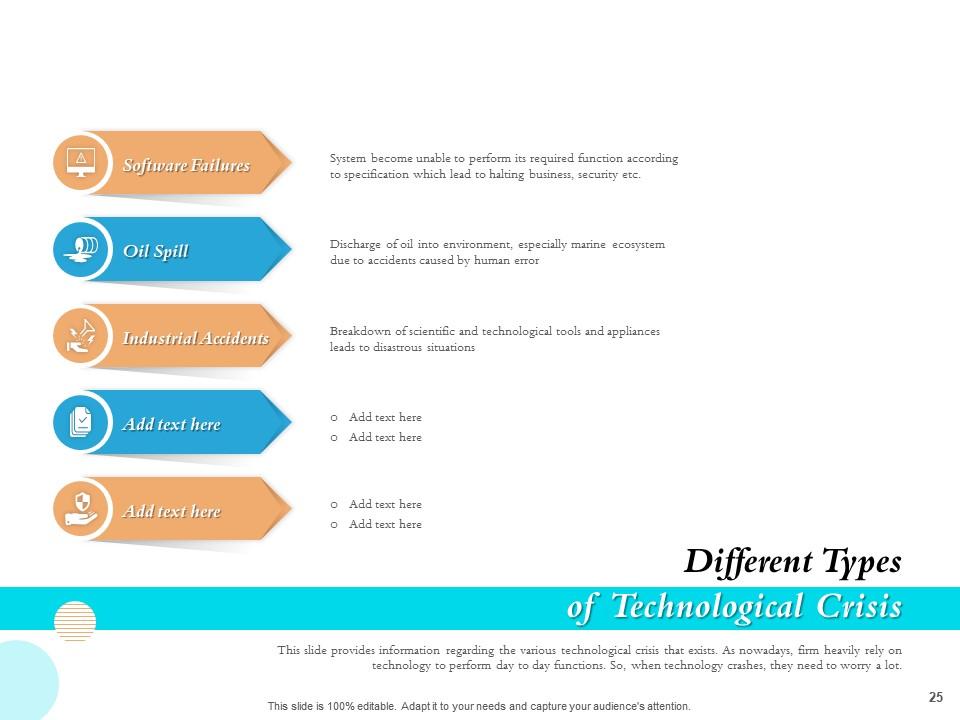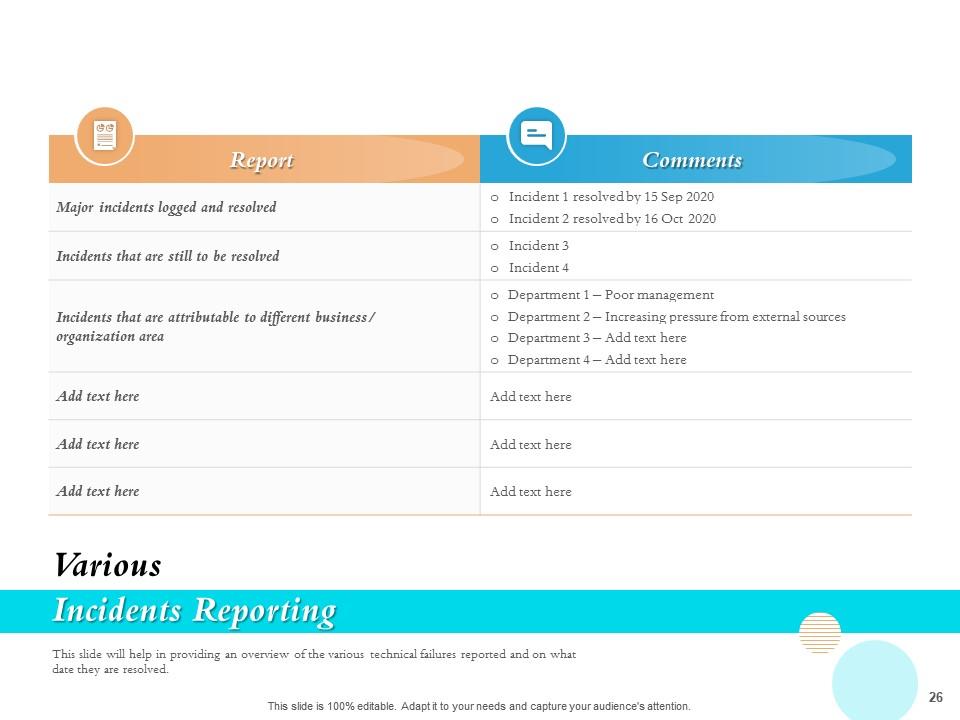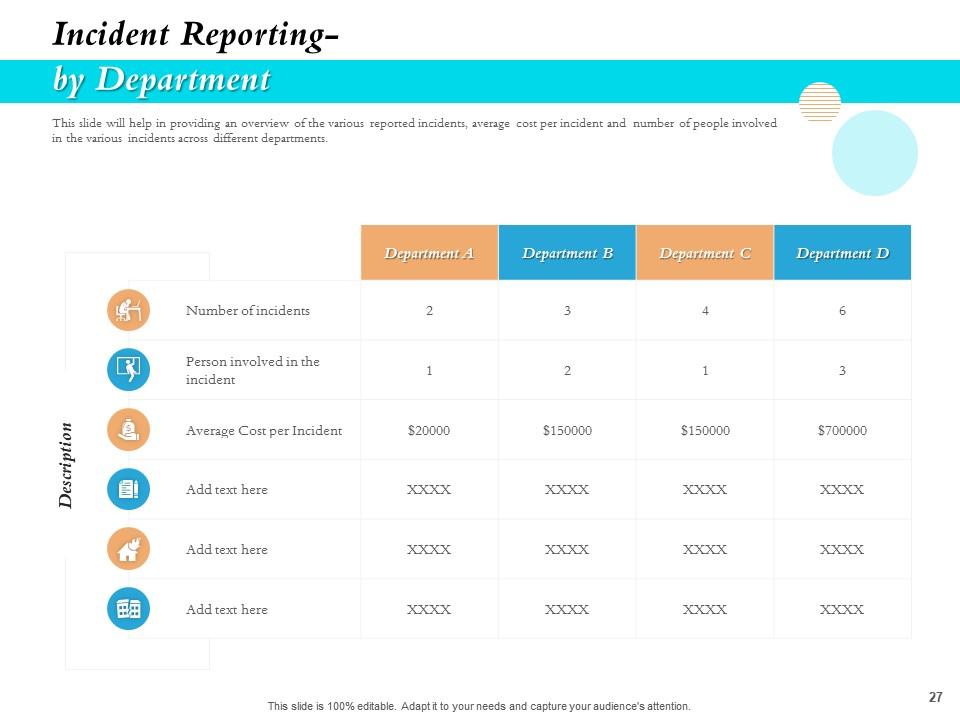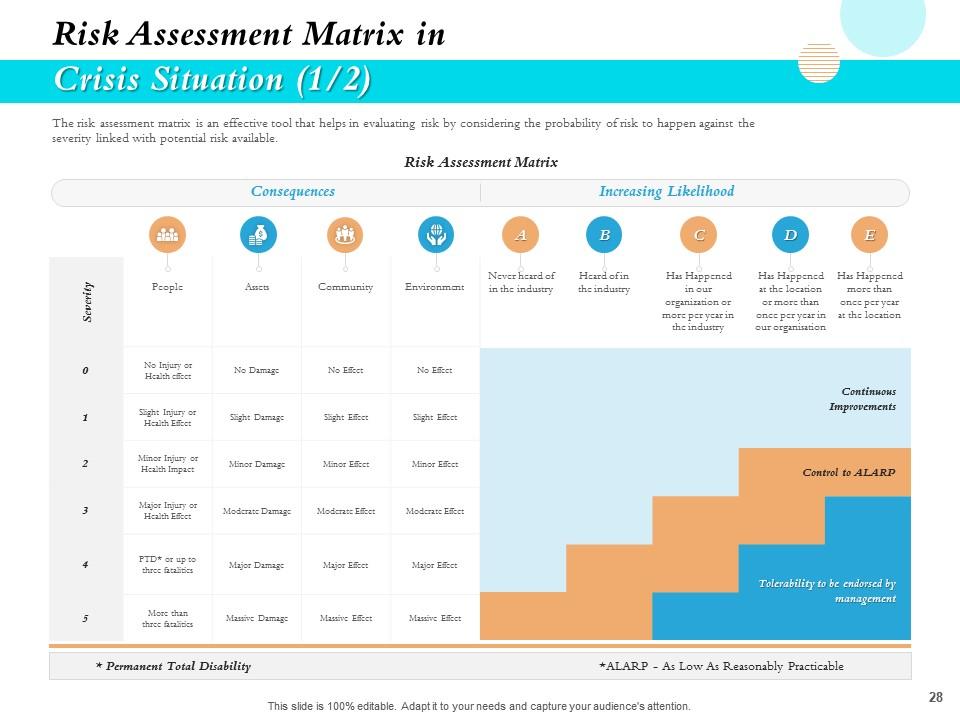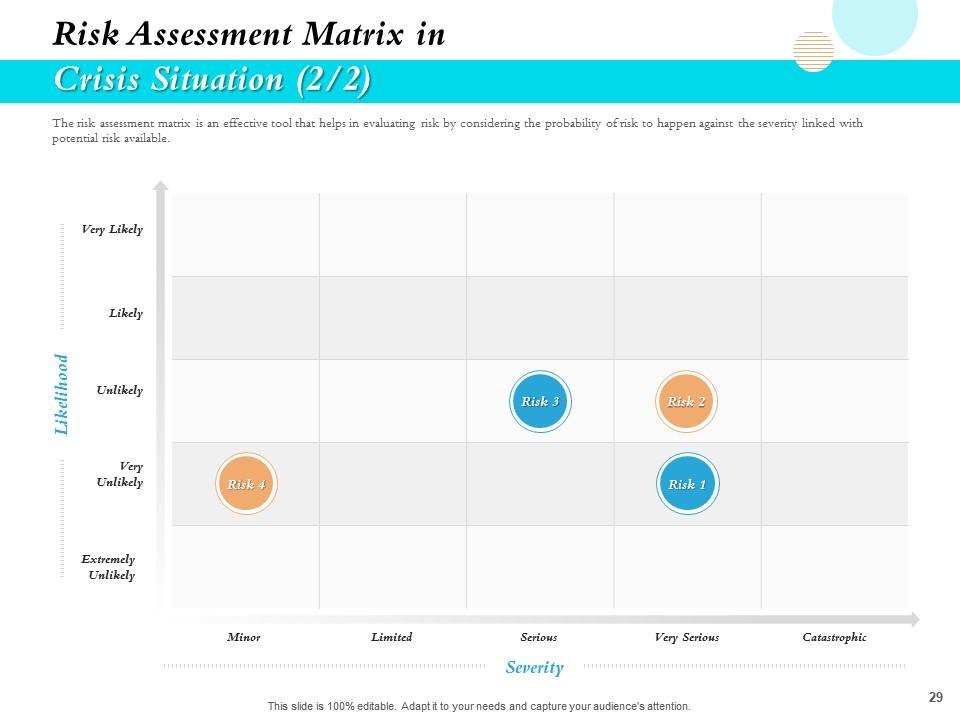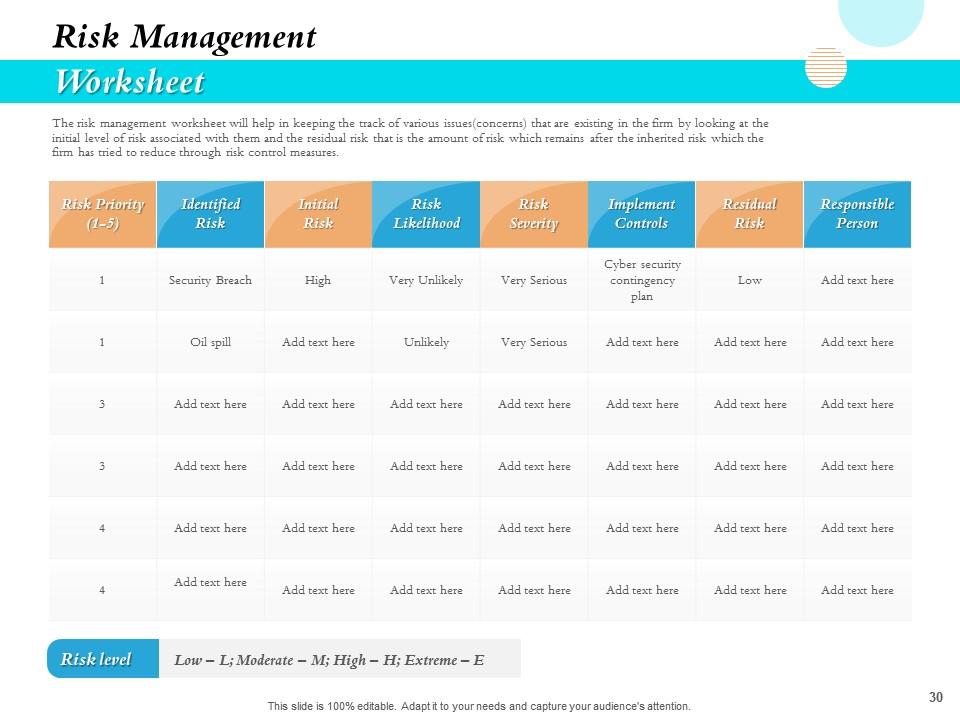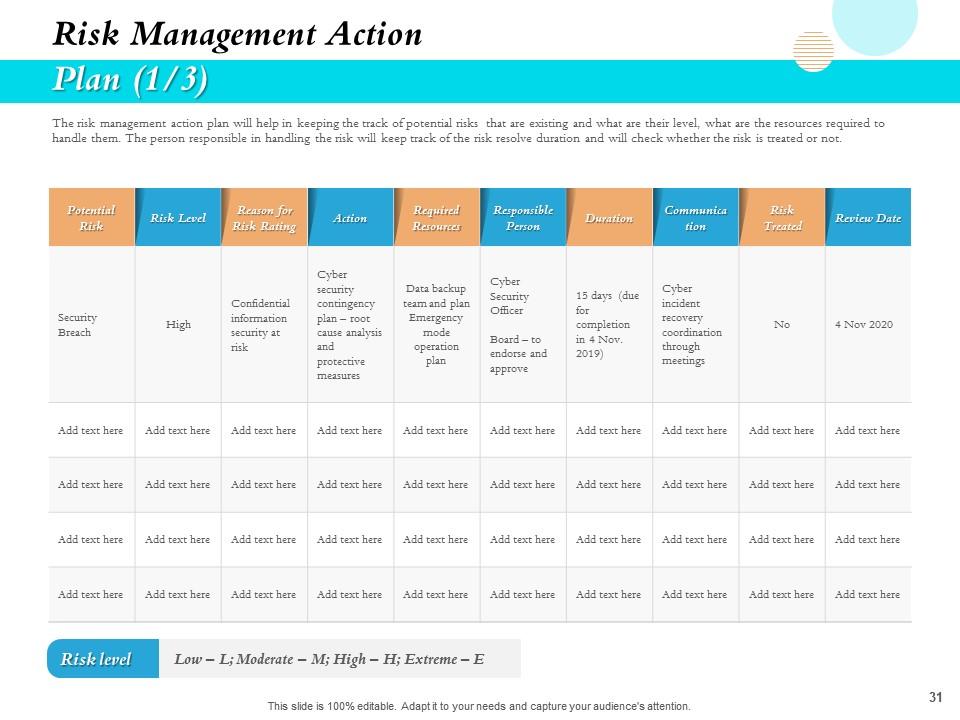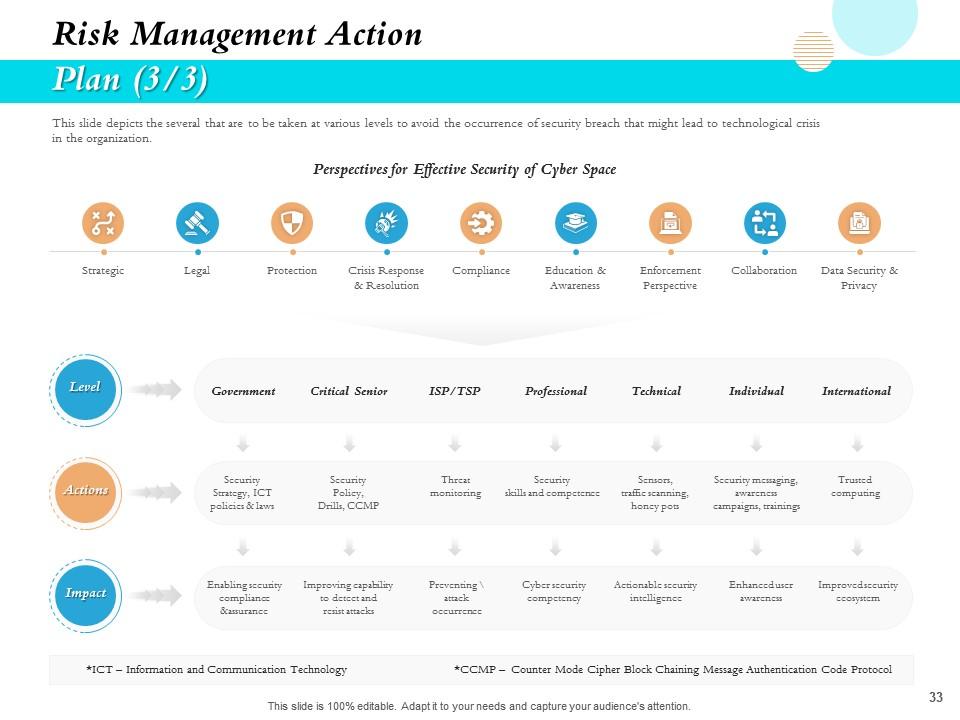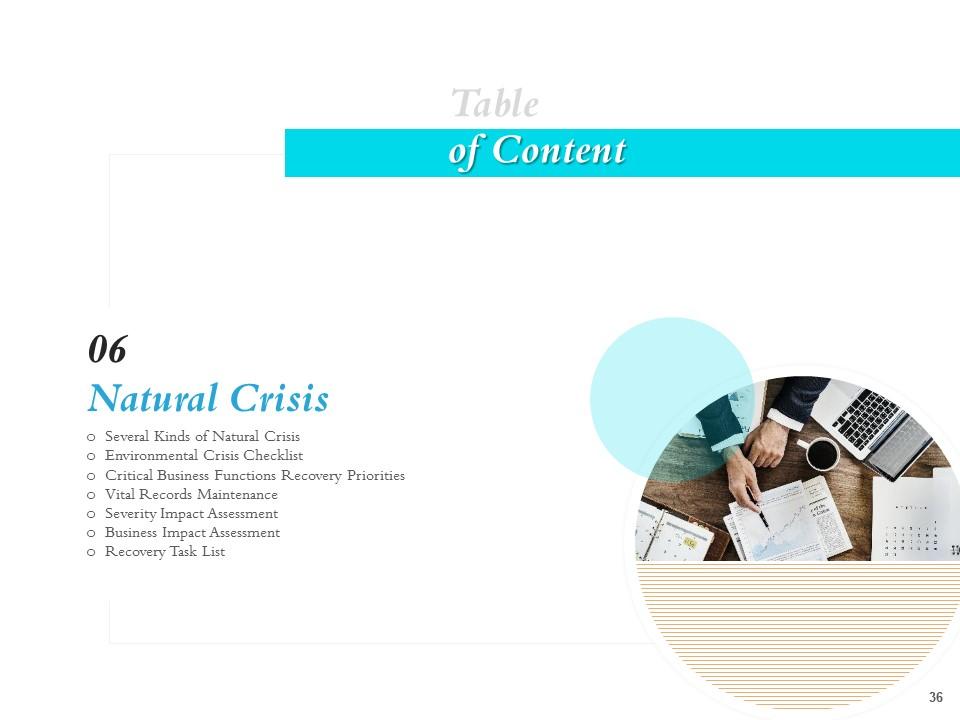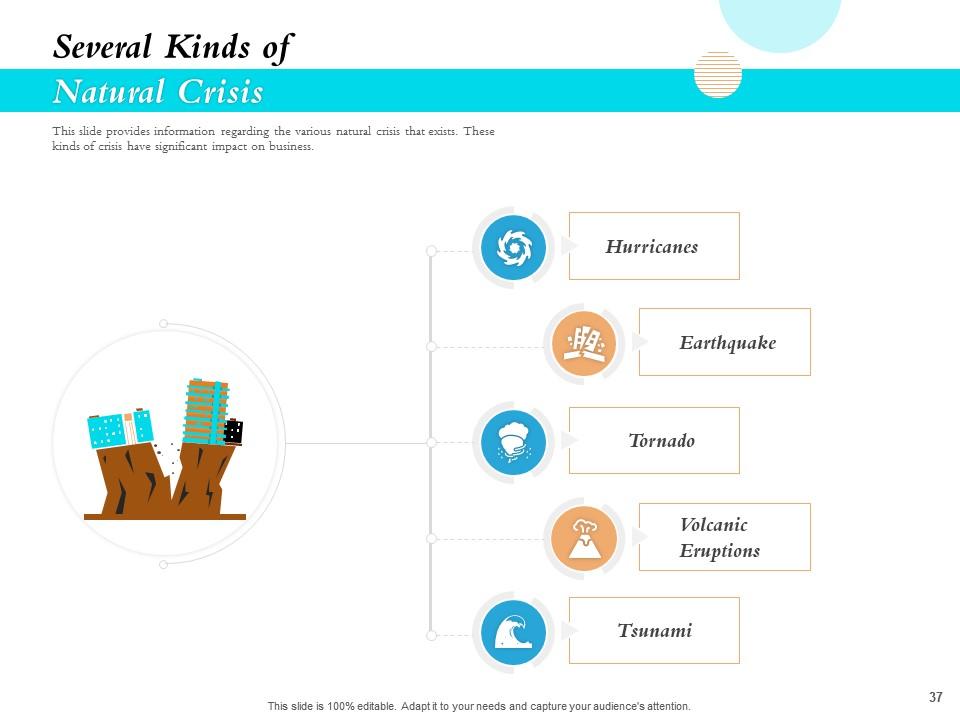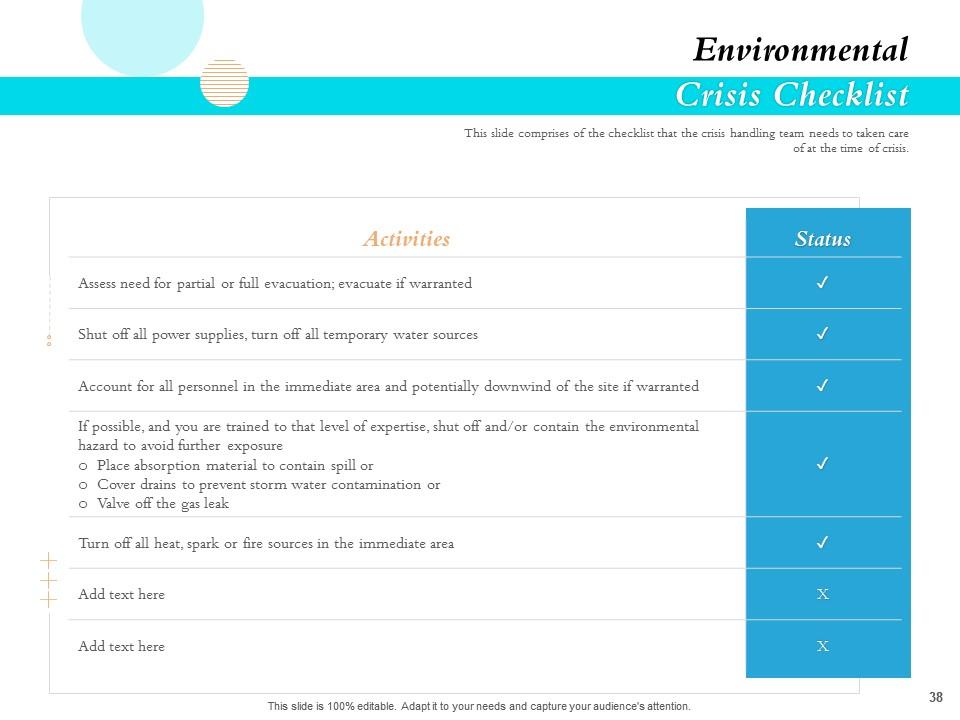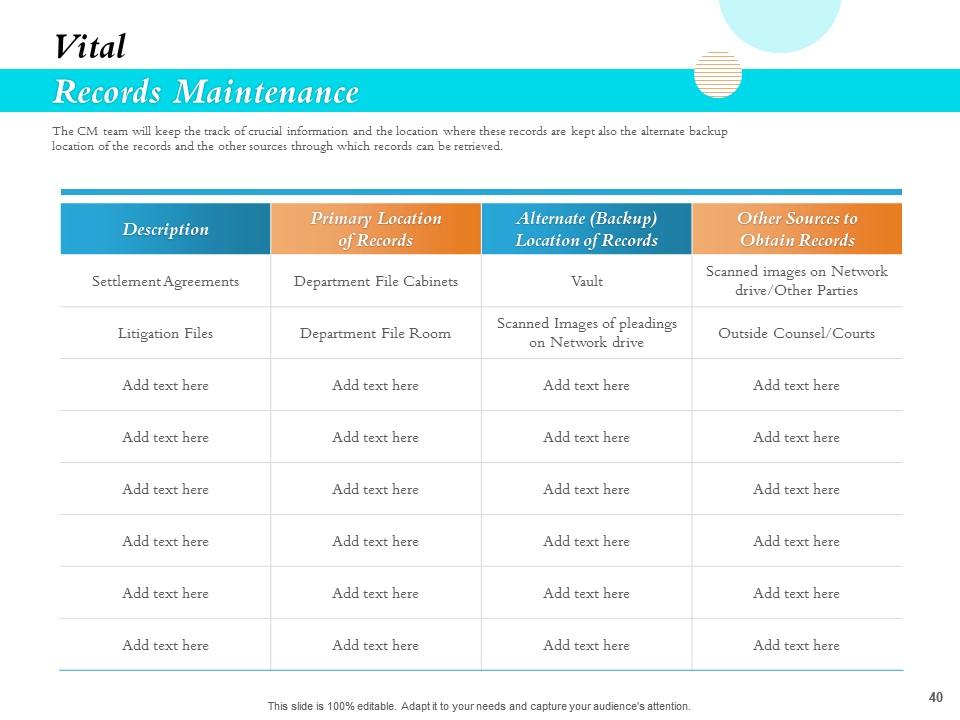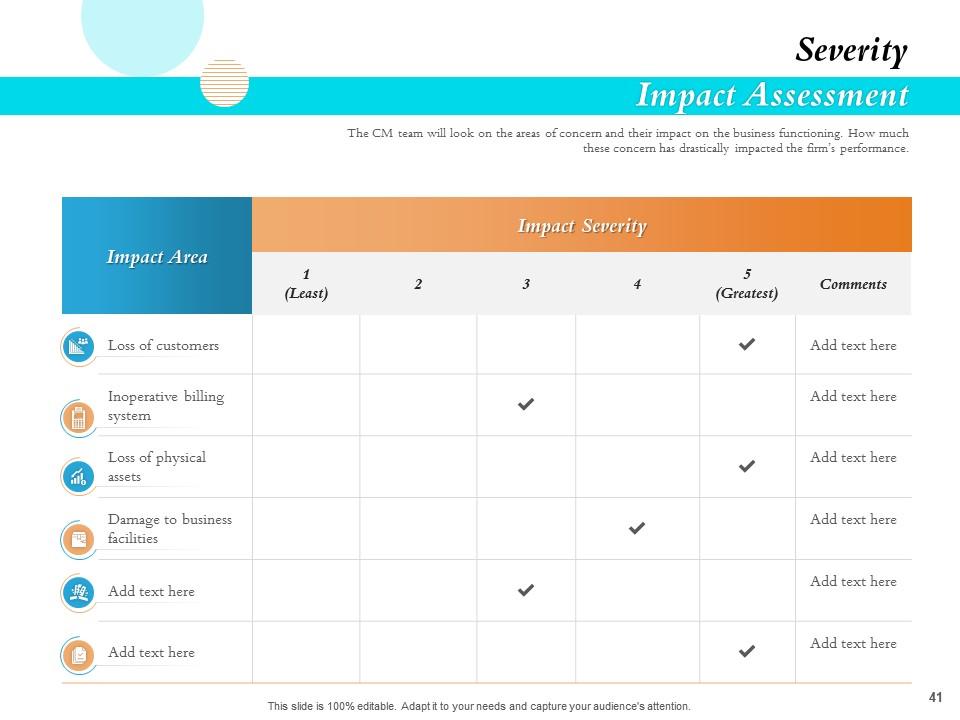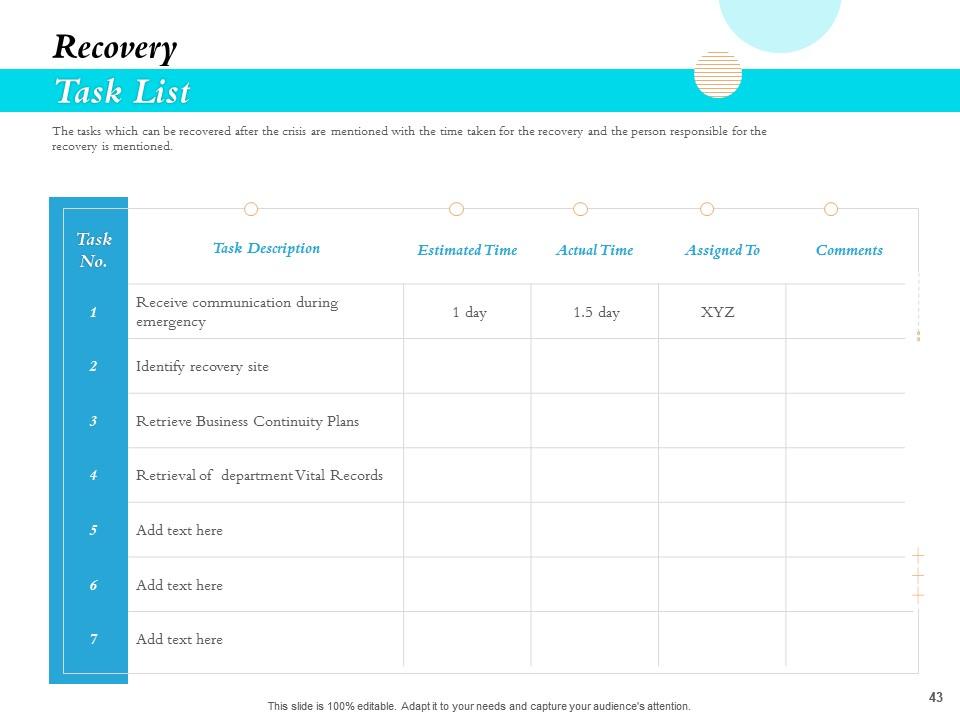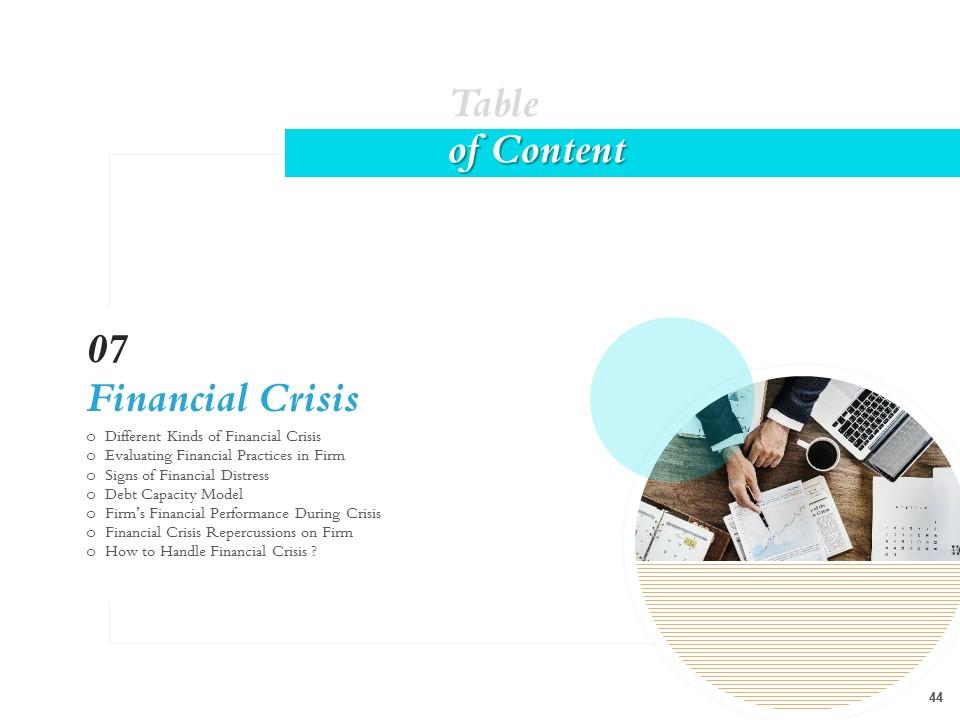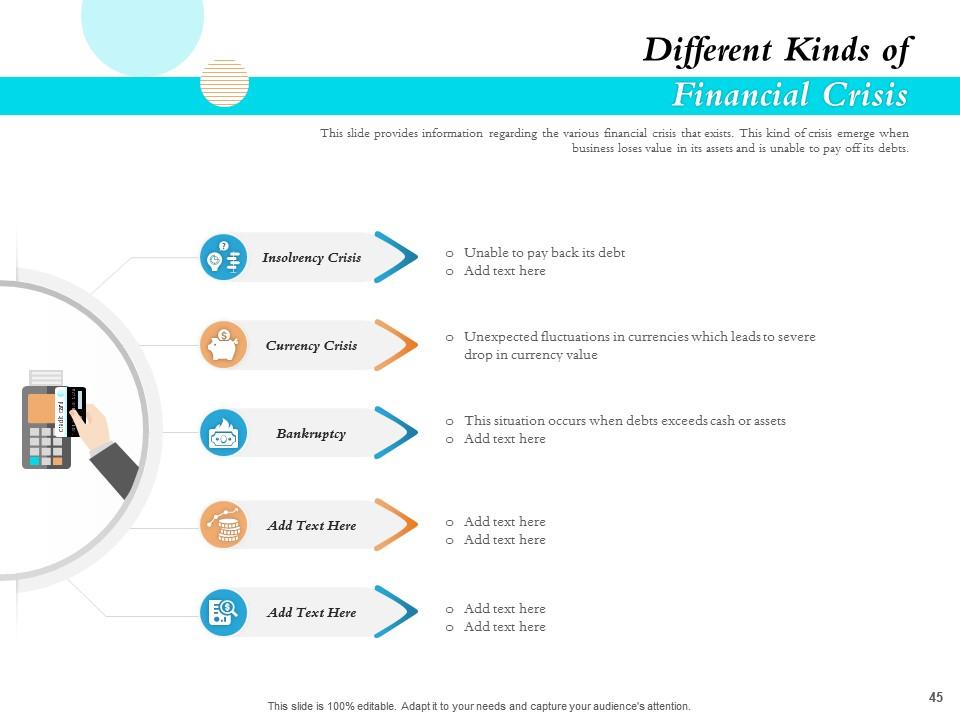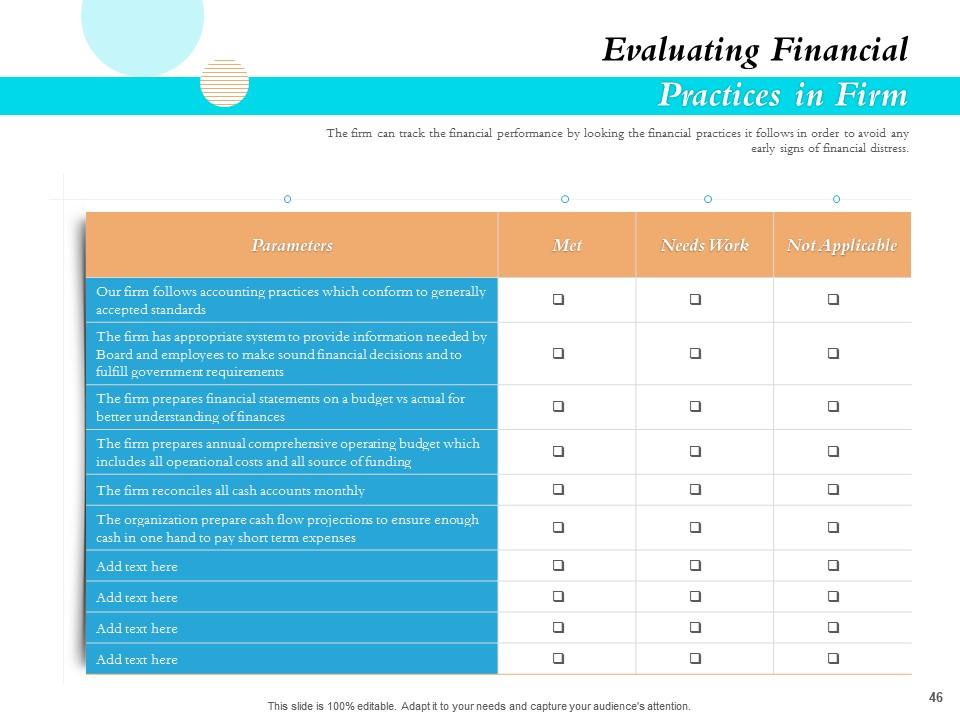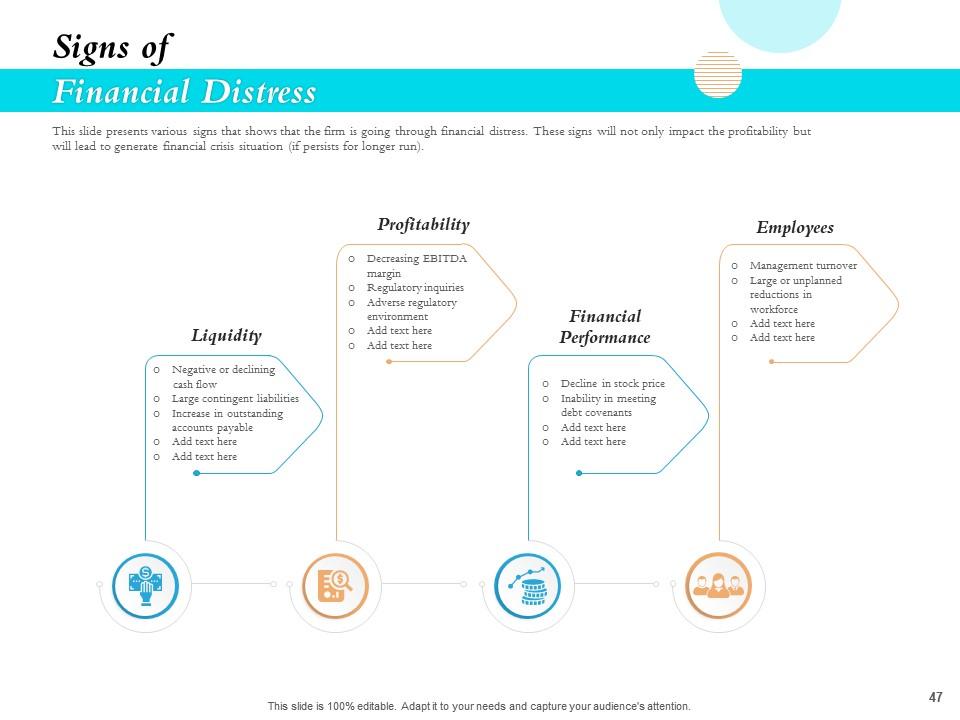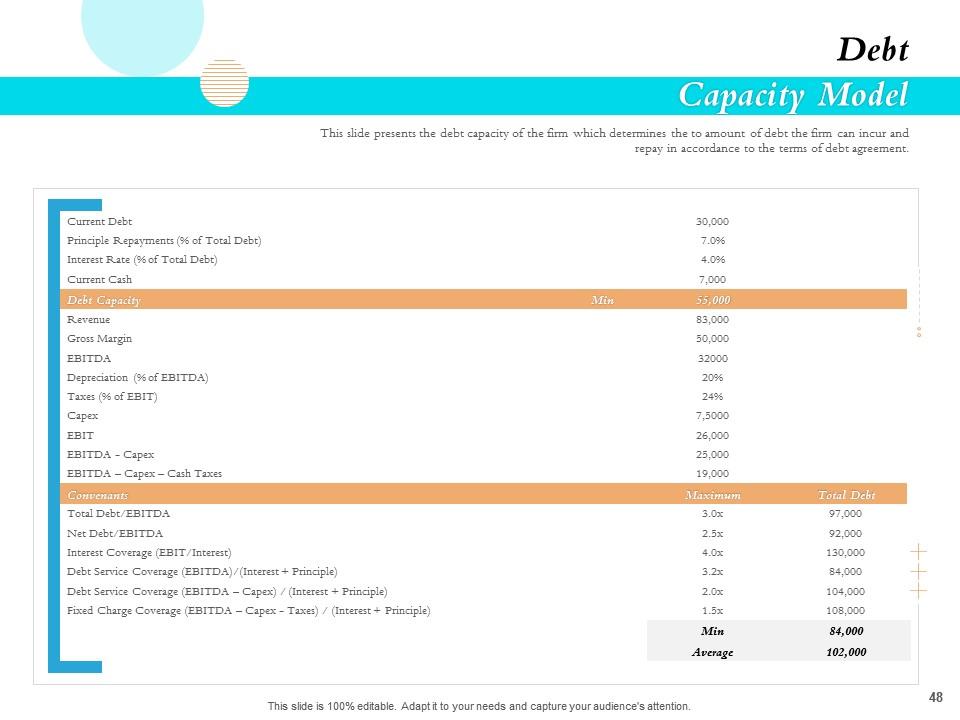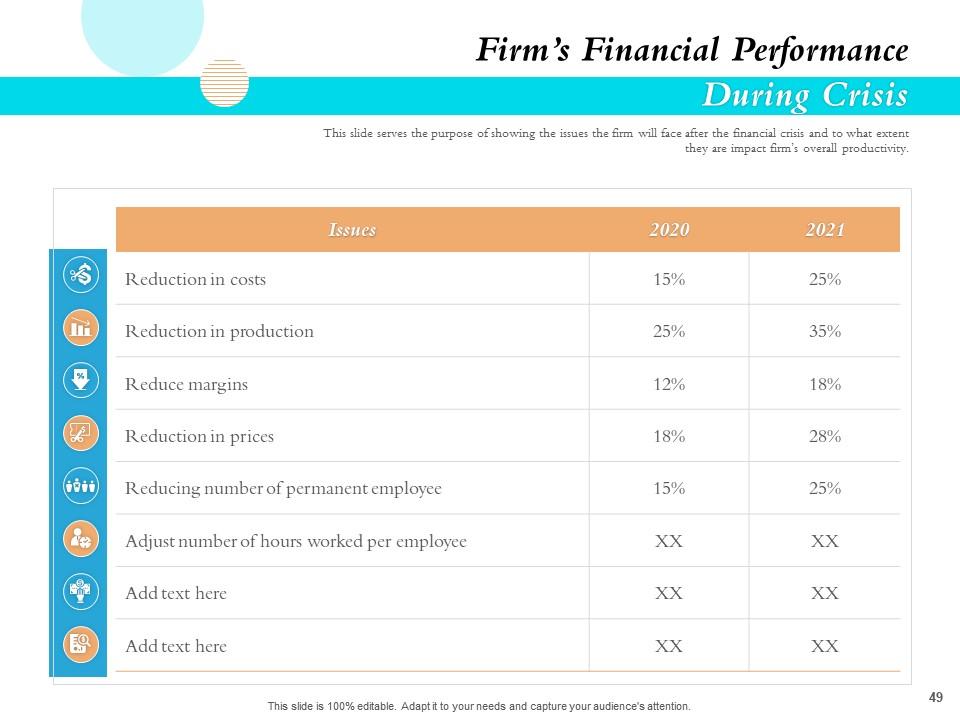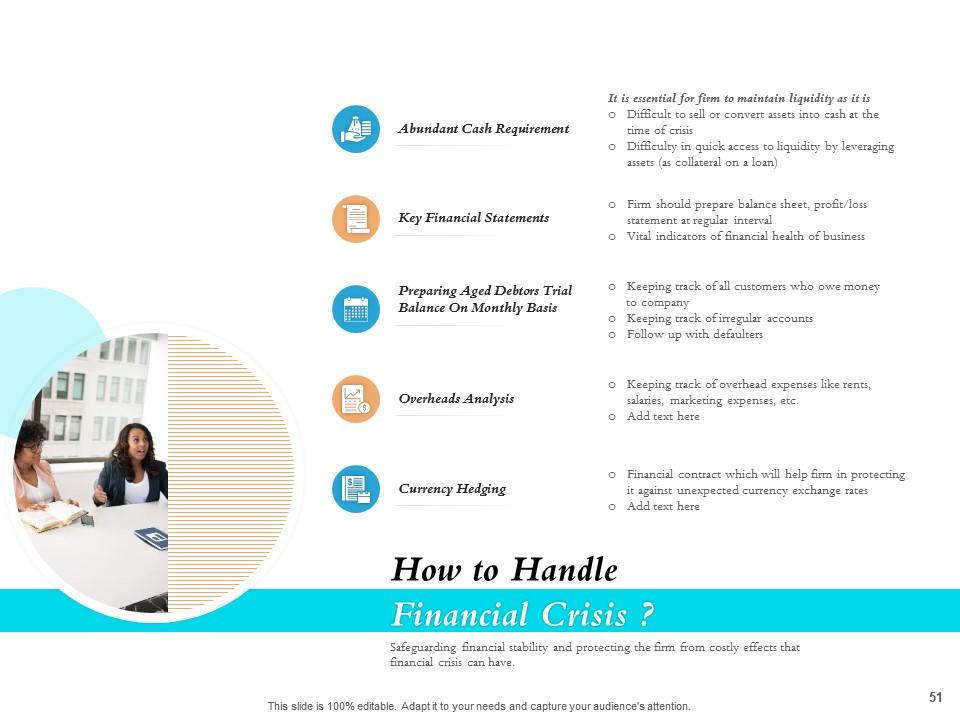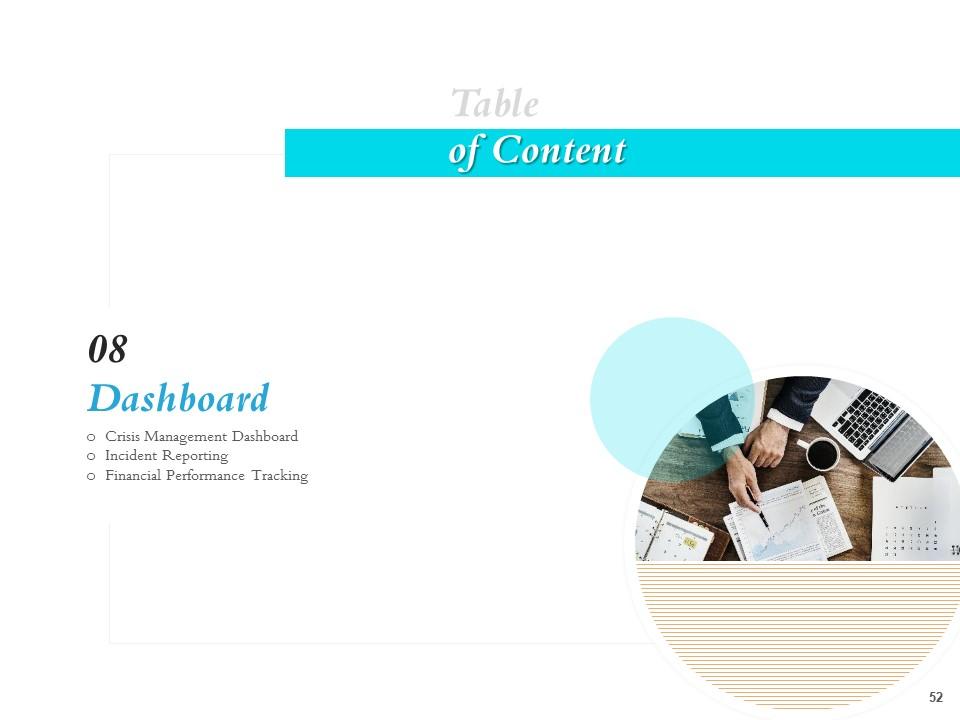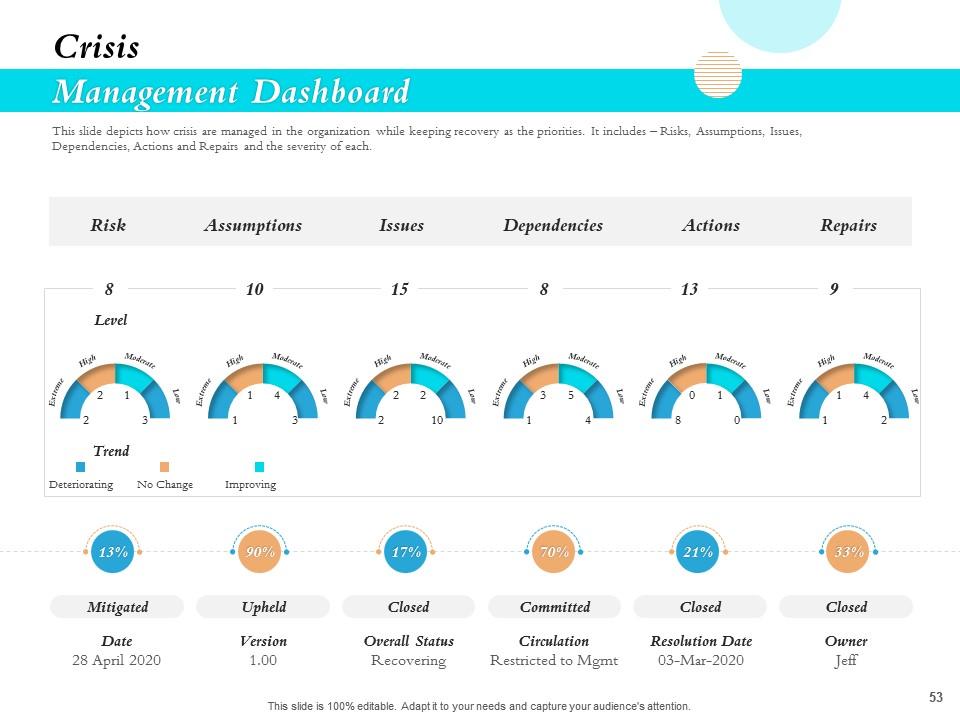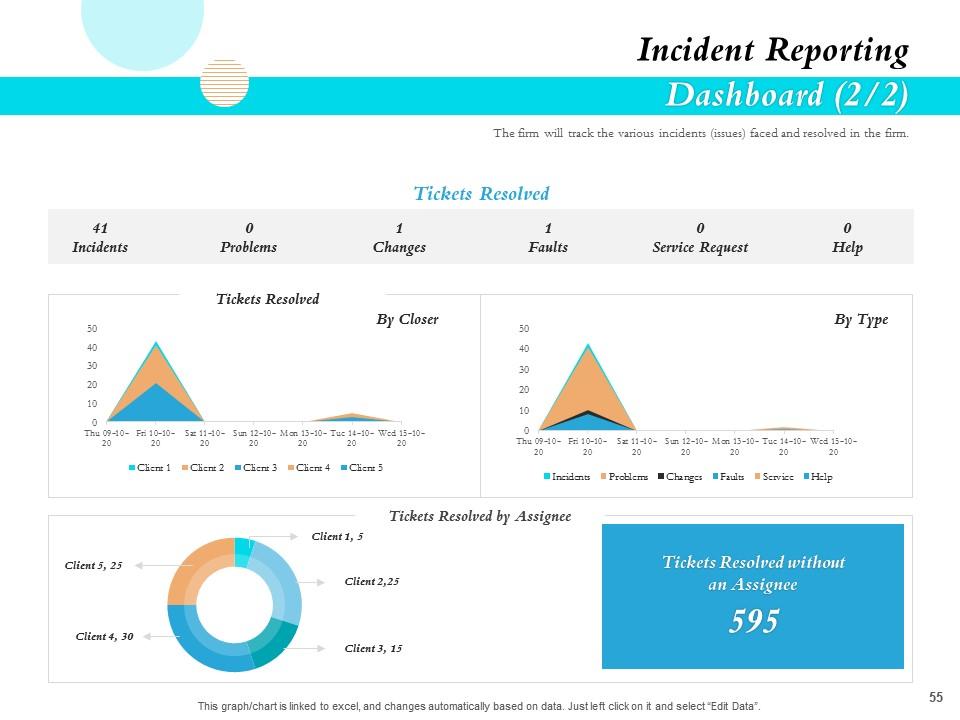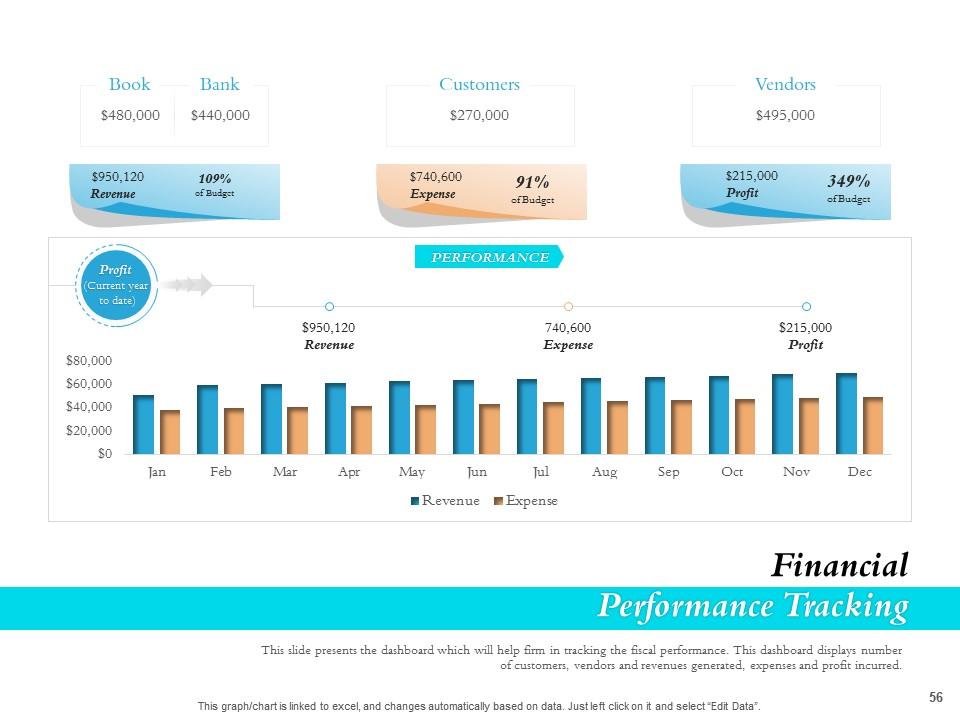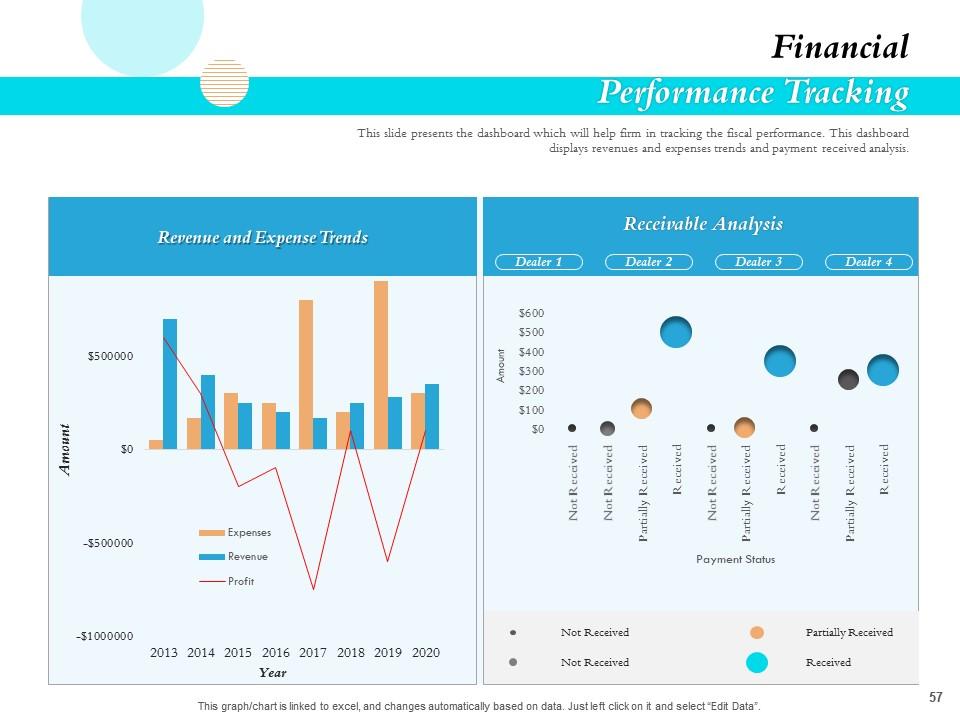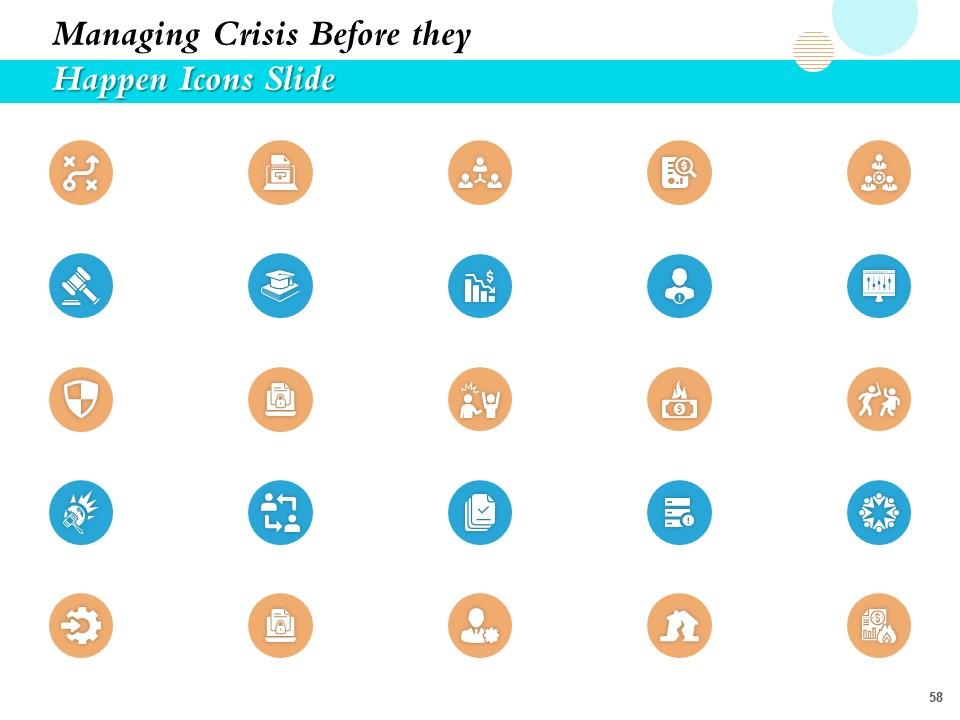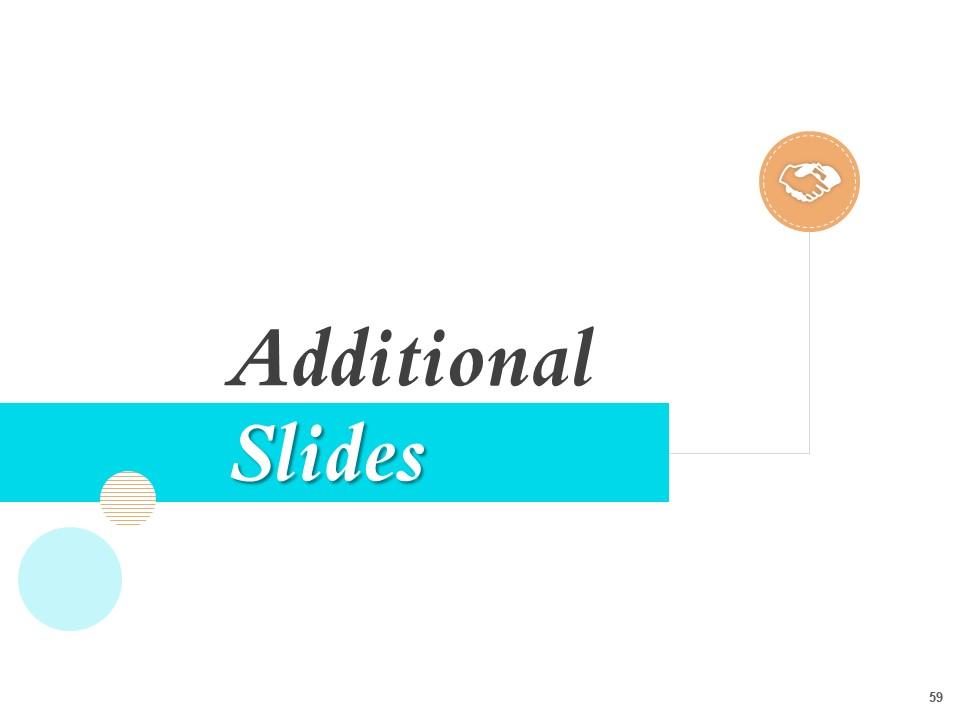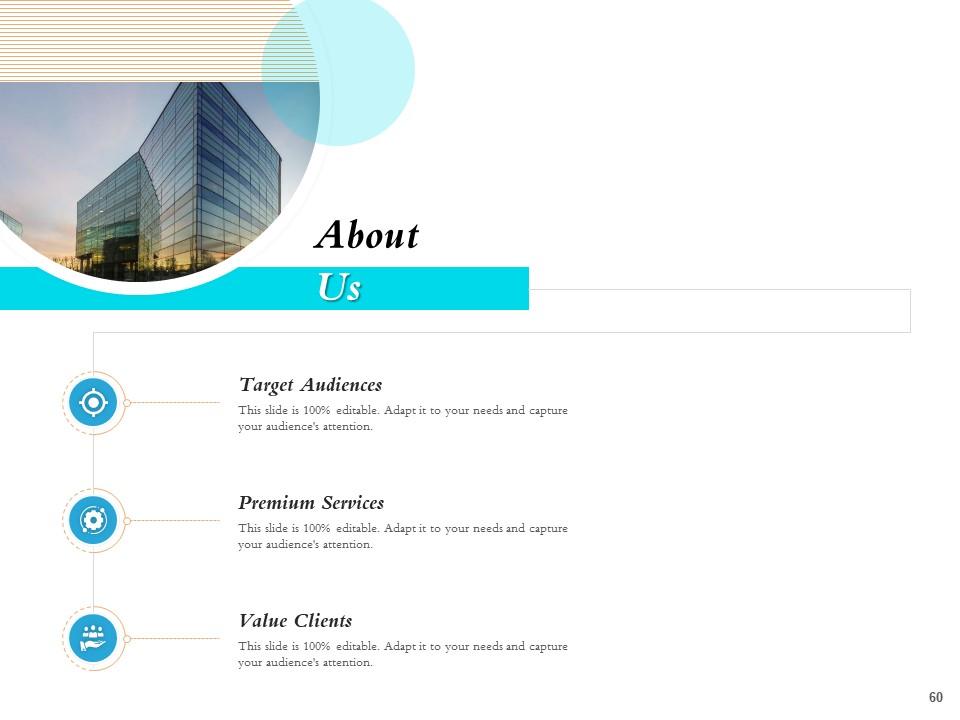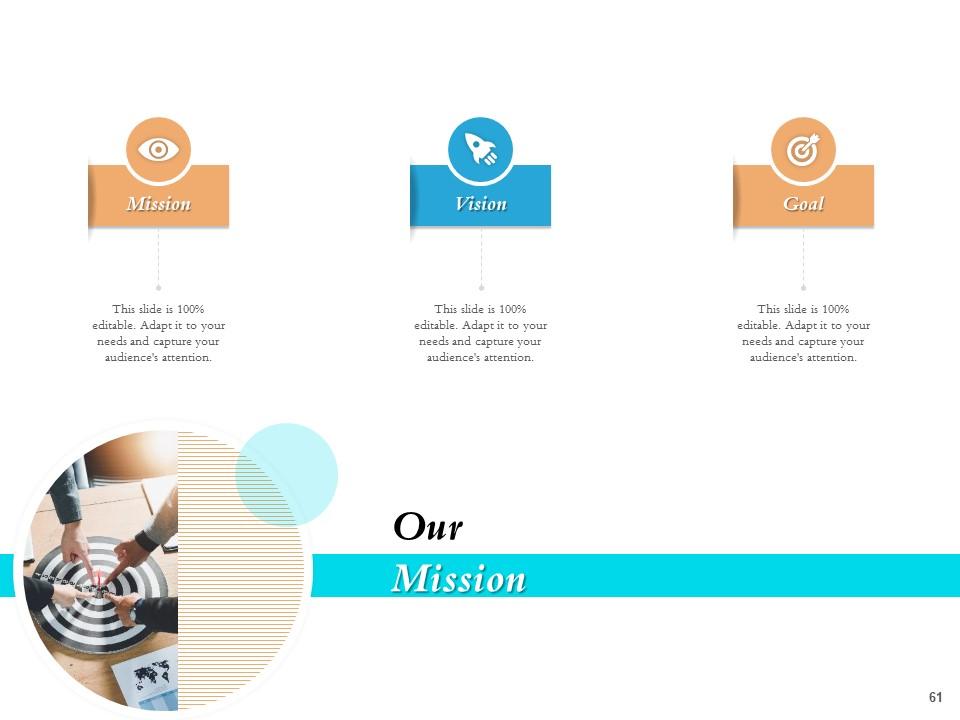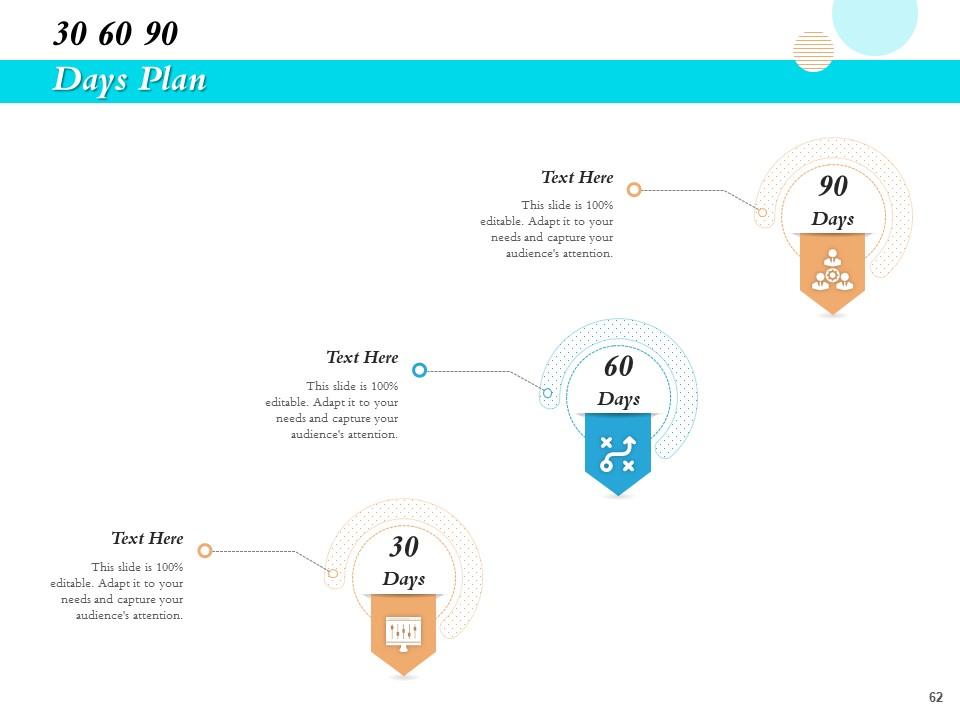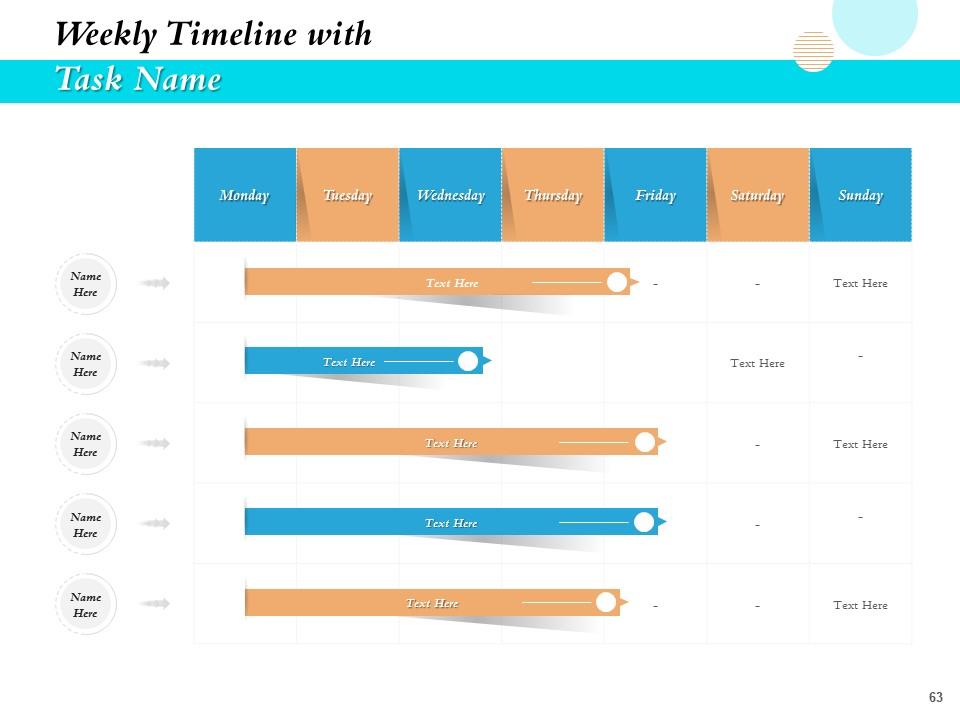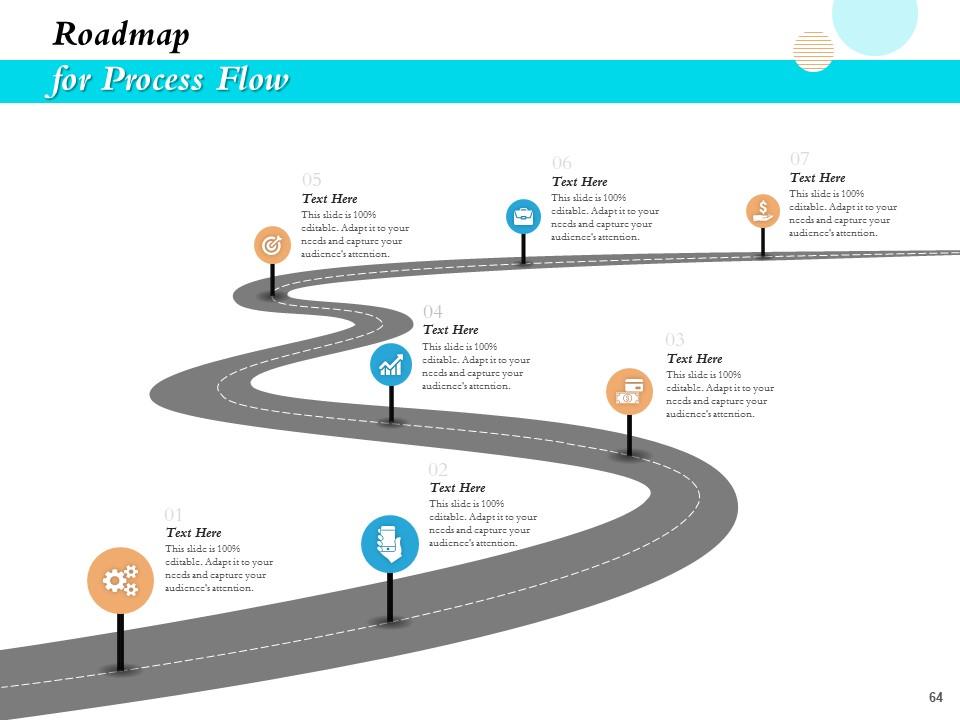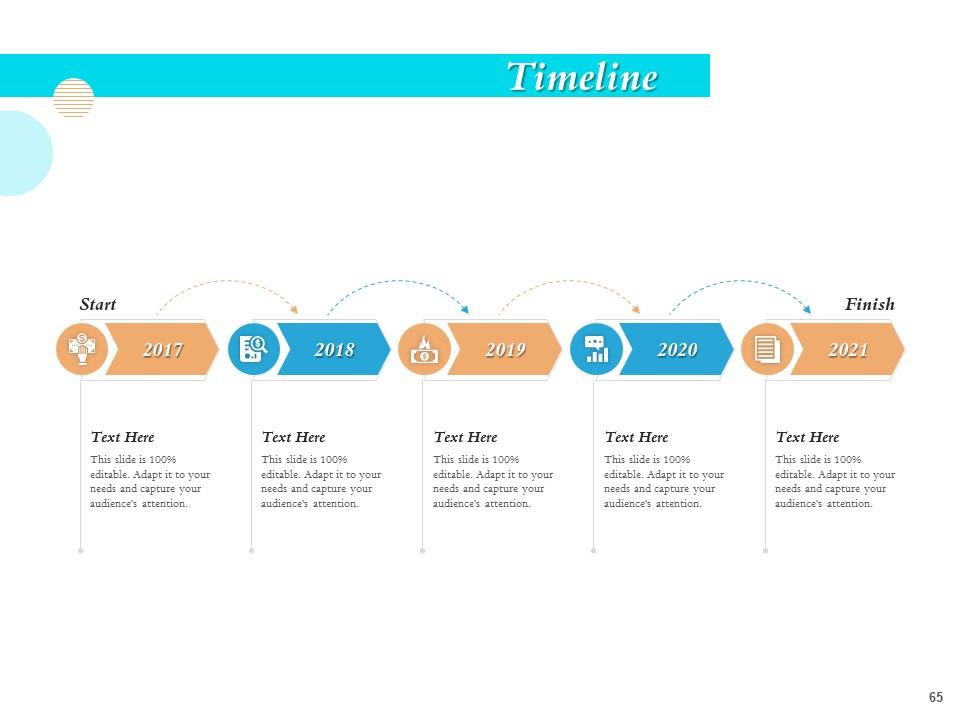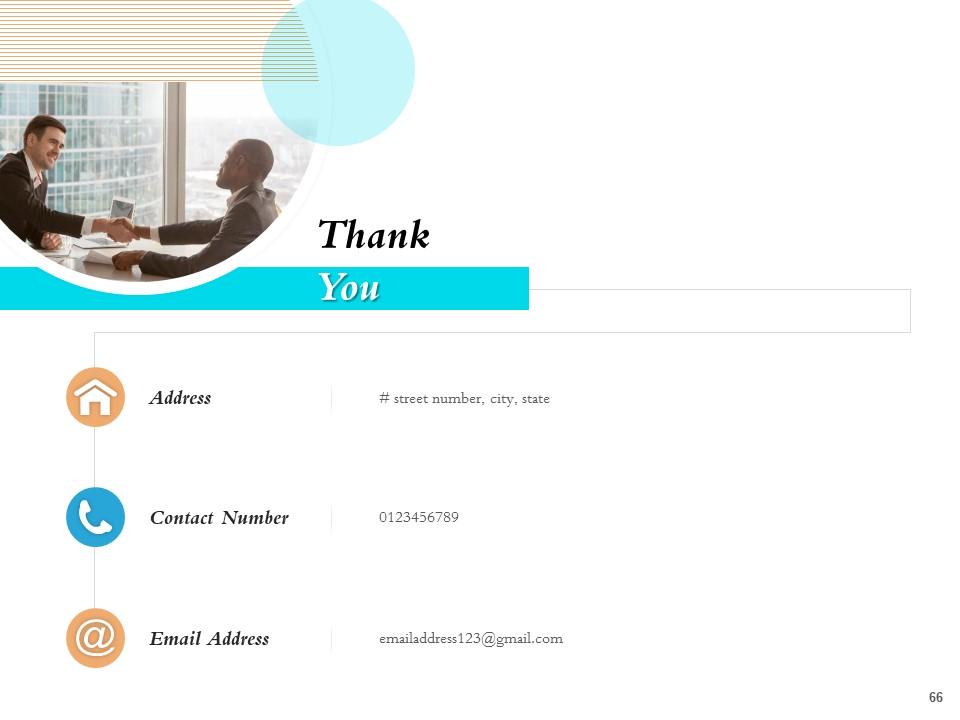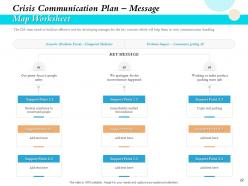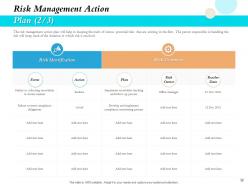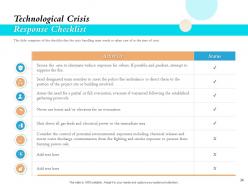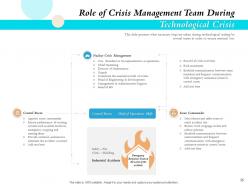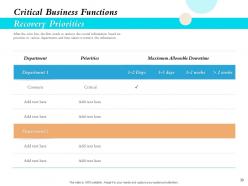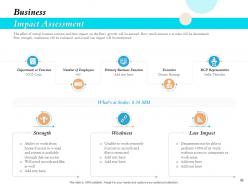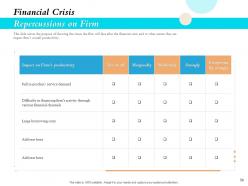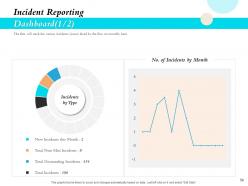Managing crisis before they happen deck powerpoint presentation slides
Help to build and train a crisis management team with the help of Managing Crisis Before They Happen Deck PowerPoint Presentation Slides. The presentation discusses organizational crisis, crisis leadership, and team, personal crisis, technological crisis, natural crisis, financial crisis, and dashboard. It contains information about several situations, that will result in an increase of potential threats in the organization. Take the assistance of this emergency planning PowerPoint slideshow, and showcase several types of organizational crisis. Discuss the crisis communication plan. By using our engaging disaster management infographics, you can discuss different kinds of financial crises and ways to evaluate financial practices in firms. Highlight different kinds of technological crisis along with various incident reporting, risk management matrix, risk management action plan by using ready-to-use business continuity planning PowerPoint visuals. The crisis management slide deck also contains various kinds of personal and natural crises. At last, the presentation shows a crisis management dashboard, financial performance tracking, etc. Hence, develop the ways to anticipate risks that firms can face in future by downloading this ready-to-use crisis management PPT slide deck
- Google Slides is a new FREE Presentation software from Google.
- All our content is 100% compatible with Google Slides.
- Just download our designs, and upload them to Google Slides and they will work automatically.
- Amaze your audience with SlideTeam and Google Slides.
-
Want Changes to This PPT Slide? Check out our Presentation Design Services
- WideScreen Aspect ratio is becoming a very popular format. When you download this product, the downloaded ZIP will contain this product in both standard and widescreen format.
-

- Some older products that we have may only be in standard format, but they can easily be converted to widescreen.
- To do this, please open the SlideTeam product in Powerpoint, and go to
- Design ( On the top bar) -> Page Setup -> and select "On-screen Show (16:9)” in the drop down for "Slides Sized for".
- The slide or theme will change to widescreen, and all graphics will adjust automatically. You can similarly convert our content to any other desired screen aspect ratio.
Compatible With Google Slides

Get This In WideScreen
You must be logged in to download this presentation.
PowerPoint presentation slides
Presenting Managing Crisis Before They Happen Deck Powerpoint Presentation Slides. Alteration is available for the font type, size, diagram or background color, etc. This presentation is also compatible with Google Slides and can be converted into JPG, PNG, or PDF. The slideshow supports both standard screen(4:3) and widescreen(16:9) aspect ratios.
People who downloaded this PowerPoint presentation also viewed the following :
Content of this Powerpoint Presentation
Slide 1: This slide is the title slide for Managing Crisis Before They Happen Deck. Just add Your Company Name and you are good to go!
Slide 2: This slide shows the Agenda for Managing Crisis Before they Happen Deck including Our aim is to protect the organization and its stakeholder by successful management of crisis through effective planning and response, This will further help the firm in preventing or alleviate the impact of the crisis, To build and train a crisis management team which will aid during a crisis, Document business continuity and incident management actions required, and To develop ways through which we can anticipate risks that the firm might face in the future.
Slide 3: This slide displays the Table of Contents with Introduction, Personnel Crisis, Natural Crisis, Organizational Crisis, Financial Crisis, Crisis Leadership & Team, Technological Crisis, and Dashboard.
Slide 4: This slide presents the Introduction section of the presentation with two sub-topics What kind of Crisis Our Firm can Face? and Impact of Critical Issues on Overall Firm’s Performance.
Slide 5: This slide shows What kind of Crisis Our firm Can face such as Personnel Crisis, Organizational Crisis, Financial Crisis, Technological Crisis, and Natural Crisis.
Slide 6: This slide displays the Impact of Critical Issues on the Overall Firm’s Performance in terms of Loss in Sales, Tarnished Reputation, Customer Dissatisfaction, Decrease in Customer Loyalty and Increase in Expenses.
Slide 7: This slide introduces the Crisis Leadership & Team section of this presentation with four sub-topics including Crisis Team Overview, Three Tier Crisis Response Organizational Structure, Crisis Management Team Structure, and Crisis Management Team Training Schedule.
Slide 8: This slide shows the Crisis Team Overview on the Site/Facility level, Country/Regional level, Corporate/Executive Level, and Business Support Team.
Slide 9: This slide showcases three Tier Crisis Response Organizational Structure on corporate, regional, and facility-level with a detailed flow chart.
Slide 10: This slide presents the Crisis Management Team Structure under Crisis Management Head, Public Affair Advisor, Legal Advisor, HR Advisor, Crisis Management Advisor, Security Manager, HSSE Advisor, and Medical Advisor.
Slide 11: This slide is a continuation of the Crisis Management Team showing Public Affair Advisor, Security Manager, Crisis Management Head, Legal Advisor, HSSE Advisor, Medical Advisor, Crisis Management Advisor, and HR Advisor.
Slide 12: This slide shows the Crisis Management Team Training Schedule detailing Hypotheticals, Type, Workshops, Simulations (Functional exercise), and Field Exercises.
Slide 13: This slide introduces the Personnel Crisis section of this presentation with three sub-topics including Various Kinds of Personnel Crisis, Employee Crisis Prevention, and Employee Assistance programs.
Slide 14: This slide shows Various Kinds of Personnel Crisis including Unethical or illegal misconduct, Violating the company’s values, and Sexual Assaults.
Slide 15: This slide displays the Employee Crisis Prevention including various Services, Communication Mode, and Frequency.
Slide 16: This slide showcases the Employee Assistance Program covering services, communication mode, cost, and comments.
Slide 17: This slide is the continuation of the Employee Assistance Program describing the clinical services, work and life services, and employer services.
Slide 18: This slide introduces the Organizational Crisis section of the presentation with three sub-topics including Several Types of Organizational Crisis, Workplace Crisis Incident Summary Report, and Crisis Communication Plan.
Slide 19: This slide provides information regarding several types of organizational crises such as Crisis Of Organizational Misdeeds, Rumors, and Workplace Violence.
Slide 20: This slide shows the Workplace Crisis Incident Summary Report covering Type of incident, Employee Involved, Exact Location of Incident, Time of Incident, Outside Emergency Assistance, Detailed Description Event, Assets/Money Lost or Damaged, and Corrective Management Action plan.
Slide 21: This slide displays the Crisis Communication Plan Identifying the Audience Involved with internal and external audience lists and questions.
Slide 22: This slide showcases the Crisis Communication Plan Message Map Worksheet with a key message flow chart with support points.
Slide 23: This slide presents the Effective Handling of Media Relations with a checklist status list and messages to media.
Slide 24: This slide introduces the Technological Crisis section of the presentation with multiple sub-topics including Different Types of Technological Crisis, Various Incidents Reporting, Department Wise Incident Reporting, Risk Assessment Matrix in Crisis Situation, Risk Management Worksheet, Risk Management Action Plan, Technological Crisis Response Checklist, and Role of Crisis Management During Technological Crisis.
Slide 25: This slide shows the Different Types of Technological Crises such as Software Failures, Oil Spills, and Industrial Accidents.
Slide 26: This slide displays Various Incidents Reporting describing different reports with corresponding comments.
Slide 27: This slide showcases Incident Reporting by Department With description points.
Slide 28: This slide presents the Risk Assessment Matrix in Crisis Situation detailing their consequences and increasing likelihood on the basis of severity.
Slide 29: This slide is a continuation of the Risk Assessment Matrix in Crisis Situation on the basis of likelihood and severity.
Slide 30: This slide shows the Risk Management Worksheet describing risk priority, identified risk, initial risk, risk likelihood, risk severity, implement crisis, residual risk, and responsible person.
Slide 31: This slide shows the Risk Management Action Plan detailing the Potential risk, Risk level, Reason for Risk Rating, Action, Required Resources, Responsible person, duration, Communication, Risk treated, and Review date.
Slide 32: This slide is the continuation of the Risk Management Action Plan with risk identification and risk treatment under the Event, Action, Plan, Risk Owner, and Resolve Date categories.
Slide 33: This slide is the continuation of the Risk Management Action Plan describing the details of Level, Actions, and Impact.
Slide 34: This slide shows the Technological Crisis Response Checklist with details on activities and their active/inactive status.
Slide 35: This slide displays the Role of Crisis Management Team During Technological Crisis including Control Room, Scene Commander, and Nuclear Crisis Management.
Slide 36: This slide introduces the Natural Crisis section of this presentation with seven sub-topics including Several Kinds of Natural Crisis, Environmental Crisis Checklist, Critical Business Functions Recovery Priorities, Vital Records Maintenance, Severity Impact Assessment, Business Impact Assessment, and Recovery Task List.
Slide 37: This slide shows the Several Kinds of Natural crises such as tornados, earthquakes, Volcanic, Eruptions, Tsunami, and Hurricanes.
Slide 38: This slide displays an Environmental Crisis Checklist with a list of activities and their active/inactive status.
Slide 39: This slide showcases the Critical Business Functions Recovery Priorities for two departments, priorities, and maximum allowable downtime.
Slide 40: This slide presents the Vital Records Maintenance covering description, the primary location of records, alternate location of records, and other sources to obtain records.
Slide 41: This slide shows the Severity Impact Assessment covering impact areas and their assessed severity on a scale of one to five.
Slide 42: This slide displays the Business Impact Assessment with details about strength, weakness, and loss impact.
Slide 43: This slide showcases the Recovery Task List with task description, estimated time, actual time, assigned to, and comments.
Slide 44: This slide introduces the Financial Crisis section of this presentation with seven sub-topics including Different Kinds of Financial Crisis, Evaluating Financial Practices in Firm, Signs of Financial Distress, Debt Capacity Model, Firm’s Financial Performance During Crisis, Financial Crisis Repercussions on Firm, and How to Handle Financial Crisis.
Slide 45: This slide shows the Different Kinds of Financial crises such as the Insolvency Crisis, Currency Crisis, and Bankruptcy.
Slide 46: This slide displays the Evaluating Financial Practices in Firm with parameters on the basis of meeting, needs work, or not applicable status.
Slide 47: This slide showcases the Signs of Financial Distress covering Liquidity, Profitability, Financial Performance, and Employees.
Slide 48: This slide presents Debt Capacity Model in a tabular format.
Slide 49: This slide shows the Firm’s Financial Performance During Crisis describing different issues and their measures in 2020, and 2021.
Slide 50: This slide shows the Financial Crisis Repercussions on Firm with Impact on Firm's productivity measured as not at all, marginally, moderately, strongly, and exceptionally strongly.
Slide 51: This slide displays How to Handle Financial Crisis by listing Abundant Cash Requirement, Key Financial Statements, Preparing Aged Debtors Trial Balance On Monthly Basis, Overheads Analysis, and Currency Hedging.
Slide 52: This slide introduces the Dashboard section of this presentation with three sub-topics Crisis Management Dashboard, Incident Reporting, and Financial Performance Tracking.
Slide 53: This slide shows the Crisis Management Dashboard measuring Risk, Assumptions, Issues, Dependencies, Actions, and Repairs.
Slide 54: This slide displays the Incident Reporting Dashboard with a donut chart and a line diagram measuring the number of incidents by month.
Slide 55: This is the continuation slide of the Incident Reporting Dashboard covering Incidents, Changes, Faults, Help, and Problems.
Slide 56: This slide showcases the Financial Performance Tracking by book and bank, customers, and vendors. There is also a bar chart for revenue, expense, and profit.
Slide 57: This slide presents Financial Performance Tracking for Receivable Analysis, and Revenue and Expense Trends.
Slide 58: This slide shows all the extra icons provided with this slide to ease customization.
Slide 59: This slide introduces the Additional Slides provided with this deck.
Slide 60: This is the About Us slide describing Premium Services, Value Clients, and Target Audiences.
Slide 61: This is the Our Mission slide with spaces to explain your company's Mission, Vision, and Goals.
Slide 62: This slide shows the 30 60 90 Days Plan to chart your progress through time.
Slide 63: This slide presents the Weekly Timeline with Task names for up to five tasks.
Slide 64: This slide showcases the Roadmap for Process Flow. It has seven stages marked for use.
Slide 65: This slide shows the Timeline for the project for five years from 2017 to 2021.
Slide 66: This is the conclusive Thank You slide showing your company's Email Address, Contact Number, and Address.
Managing crisis before they happen deck powerpoint presentation slides with all 66 slides:
Use our Managing Crisis Before They Happen Deck Powerpoint Presentation Slides to effectively help you save your valuable time. They are readymade to fit into any presentation structure.
-
Qualitative and comprehensive slides.
-
Unique and attractive product design.
-
Very well designed and informative templates.
-
Top Quality presentations that are easily editable.



